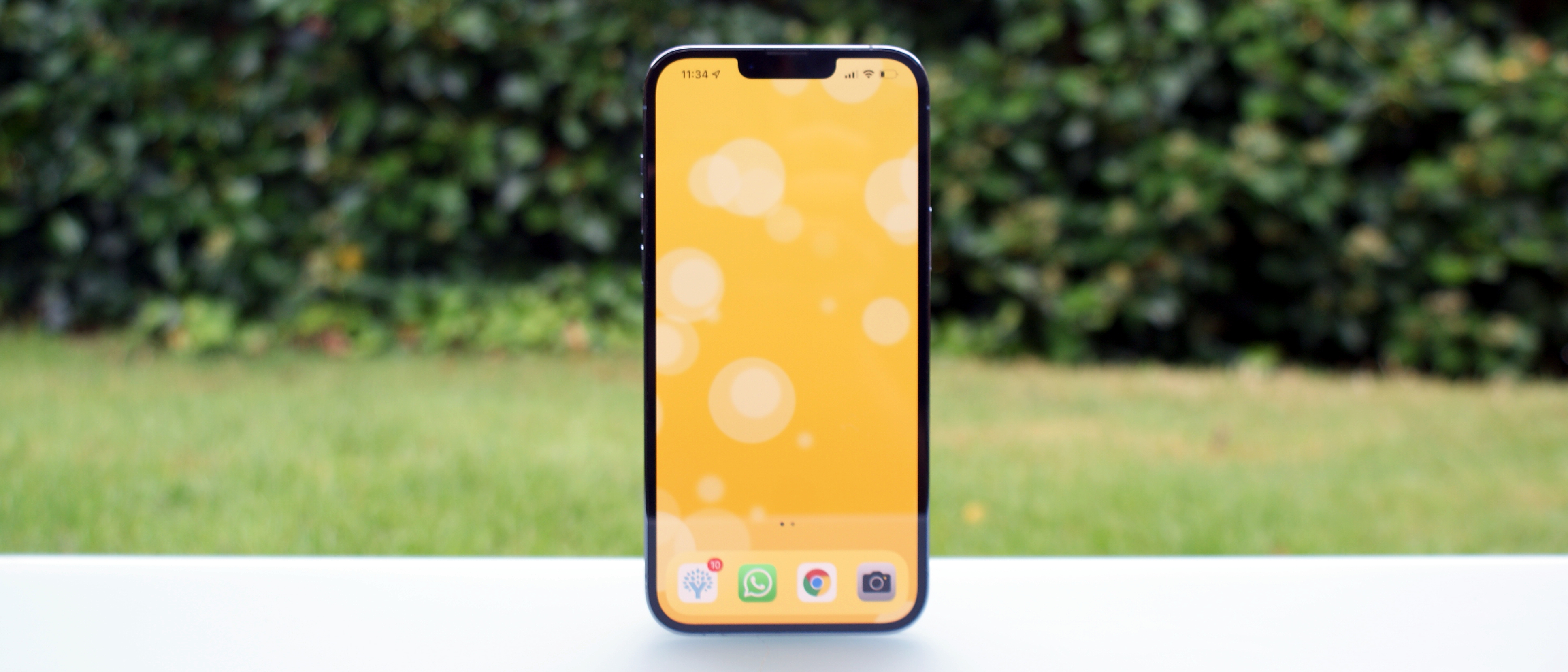TechRadar Verdict
If you’re after the best iPhone Apple has ever made by a long way, then the iPhone 13 Pro Max is it - mostly down to having a genuinely long-lasting battery. You’ll need deep pockets, both literally and figuratively, to own this phone, as it’s big and rather expensive - but you’re getting a decent amount for your money. Some upgrades seem pretty minor - we struggled to get a lot from the new 120Hz ProMotion display and Cinematic mode will get quickly forgotten - but the low light camera is excellent, the power onboard outstrips any phone on the market for heavy tasks and it’s bound together by a cohesive user interface and app experience. If you want a big iPhone that you’ll enjoy for years, this is it.
Pros
- +
Useful camera upgrades
- +
Easily the best iPhone battery ever
- +
Oodles of power
Cons
- -
120Hz screen is minimal upgrade
- -
Cinematic mode is quite basic
- -
Notch still too large
Why you can trust TechRadar
Two-minute review
Sorry, Apple fans, but the iPhone 13 Pro Max is no longer the best iPhone on the market - you're going to want to upgrade to the newer iPhone 14 Pro Max for that. The new device has an always-on display, 48MP main camera, no notch and newer chipset, making for an all-around better package.
That's not to say the 14 Pro Max's predecessor is bad, though. It's got incredible battery life, cameras that can do pretty much anything you'd need on a smartphone, and is available in a range of muted, but classy, colors. Simply put, this is one of the leading contenders for the best smartphone in the world right now.
It now also appears with a 1TB storage option (not available on the iPhone 12), so if you're a budding (or professional) film maker, you can fill this handset with content to your heart's content.
It's also got a 'Pro' price, starting at $1,099 / £1,049 / AU$1,849 and going all the way up to $1,599 / £1,549 / AU$2,719.
Yes, it's a bit of a tired trope to moan about how expensive the iPhone can get at the top end, but Apple has charged top dollar for its best iPhone year on year, and yet they still remain among the most popular models, meaning ‘too expensive’ is starting to become rather subjective when it comes to reviewing.
That said, if you're considering the iPhone 13 Pro Max then you're probably after the best iPhone, and in that case you might want to wait a little longer, as we're expecting to see the iPhone 14 Pro Max along with the rest of the iPhone 14 line on September 7. That's sure to be an upgrade in a number of ways, and even if it doesn't appeal it's likely to mean price drops for this model.
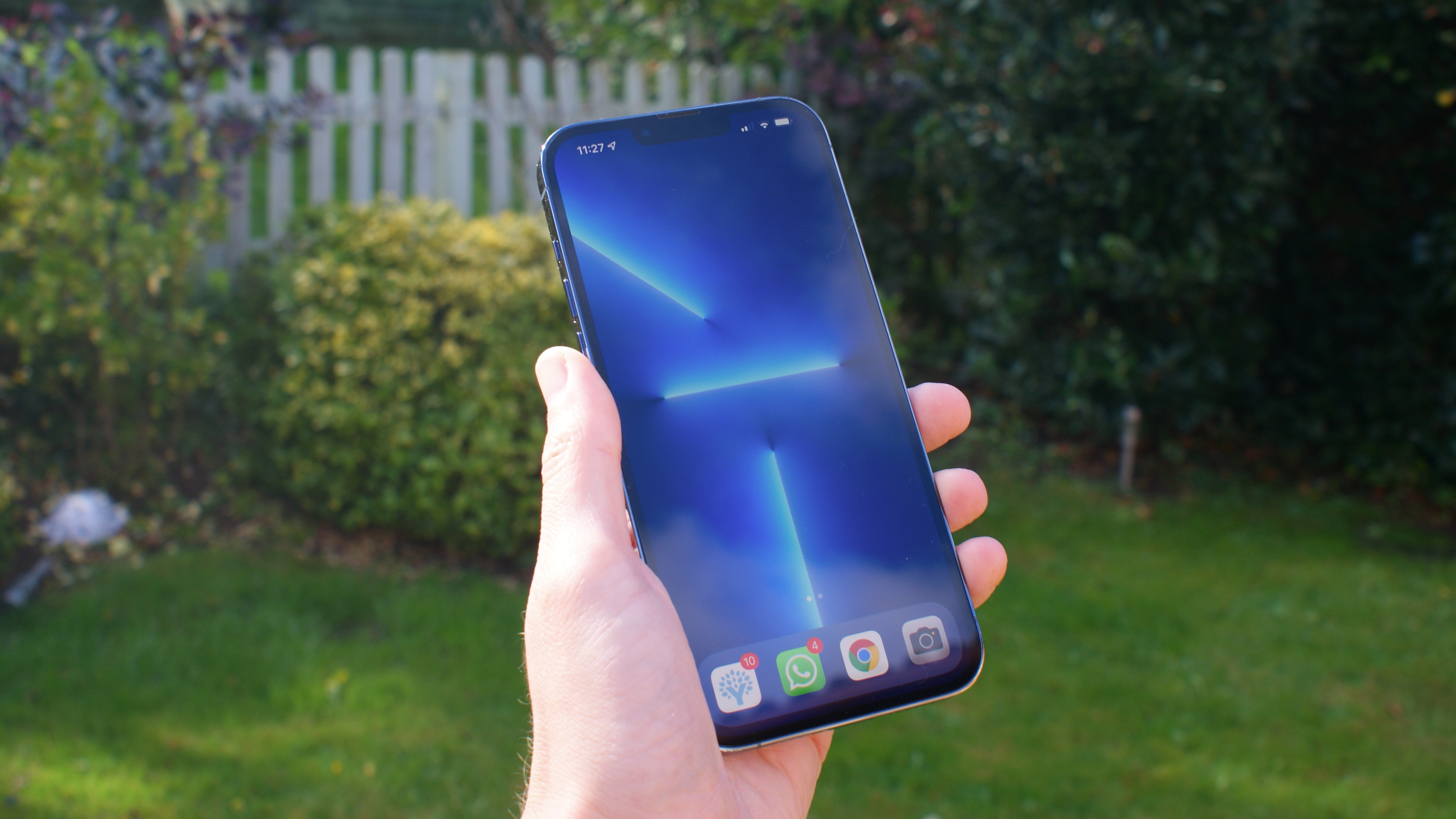
In any case, 'best' is heavily subjective here, but if you can handle the gargantuan proportions of a phone with a 6.7-inch screen, then this is easily the best iPhone Apple has ever made... until the aforementioned iPhone 14 makes an appearance.
The design is almost identical to that of the 12 Pro Max that appeared in 2020, with the flat, industrial-looking stainless steel frame surrounding the massive OLED screen.
The large camera protrusion at the rear is noticeable (and it now sticks out even further to enable greater photography prowess). The new Pro comes in a fetching Sierra Blue too this year, which is a nice-looking, powdery color to enjoy.
The screen has been improved to not only include a 120Hz refresh rate, called ProMotion (which iPhone users have been asking for for years, but which to our eyes adds very little) but also higher maximum brightness and a smaller notch.
The shrinking of the notch is good, but it’s not game-changing – Apple needs to shrink it out of existence. However, the overall screen quality is stunning, whatever you’re looking at.
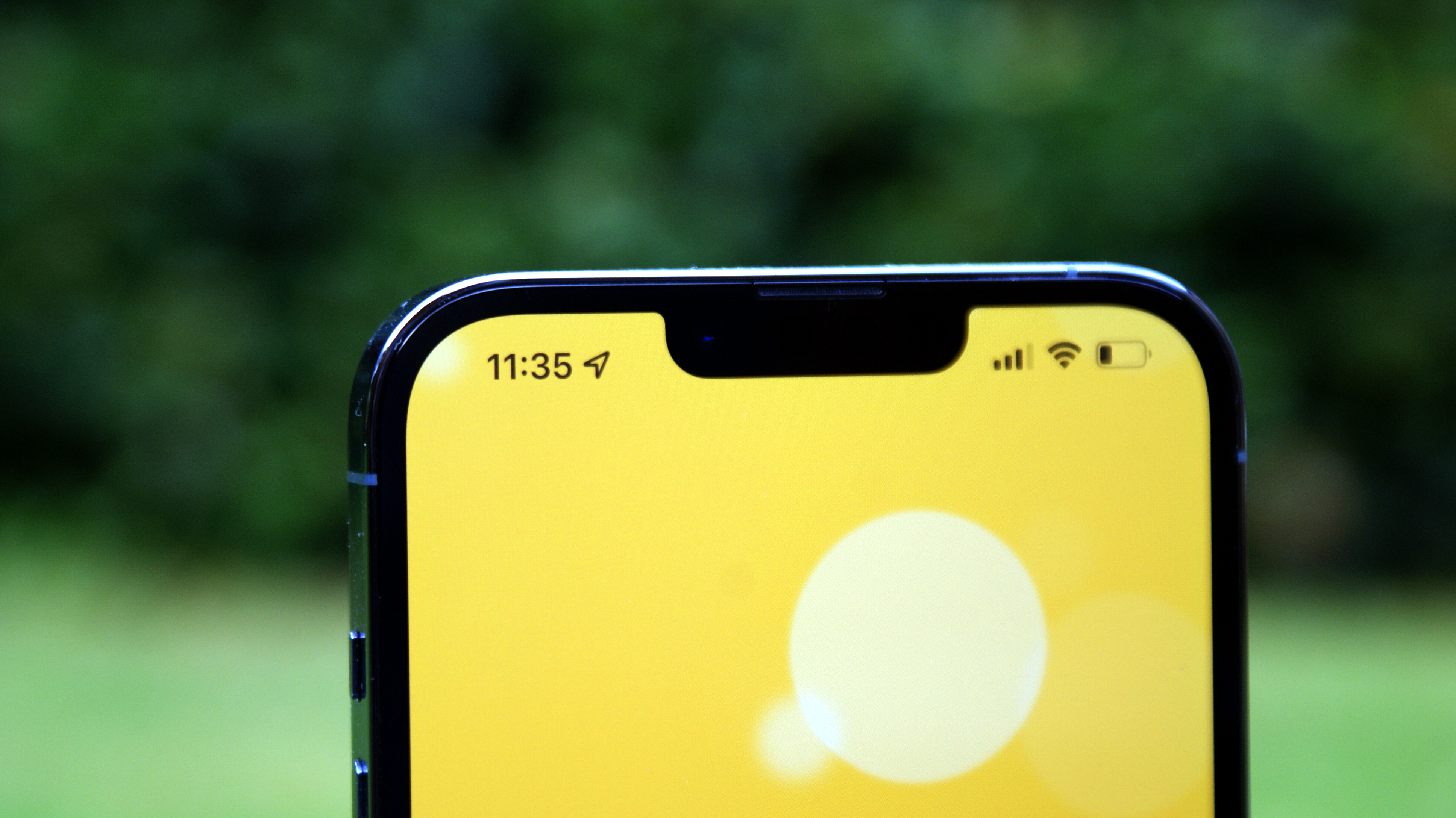
The key thing you'd buy the iPhone 13 Pro Max for, in our opinion, is its battery life. Apple has improved this again over the 12 Pro Max, which offered pretty good longevity, to the point where it’s no longer an issue.
Most of the time we'd make it into a second day before needing a charger, and even on a day of high-intensity use it was around 9pm before the phone totally died.
It remains a shame that Apple doesn't bundle its higher-power iPhone charger in the box, though, so you'll need to pay $19 / £19 / AU$29 for that speedy juicing.
The cameras, as we’ve alluded to, enable you to take a huge variety of snaps in a wider range of scenarios than ever. Apple has made a big deal about adding improved low-light capability and Night Mode to all of the three 12MP sensors on the rear, and the iPhone 13 Pro Max also comes with a nifty macrophotography mode.
This means the handset will automatically shift to the ultrawide camera when you get close to objects, and the effects are stellar.
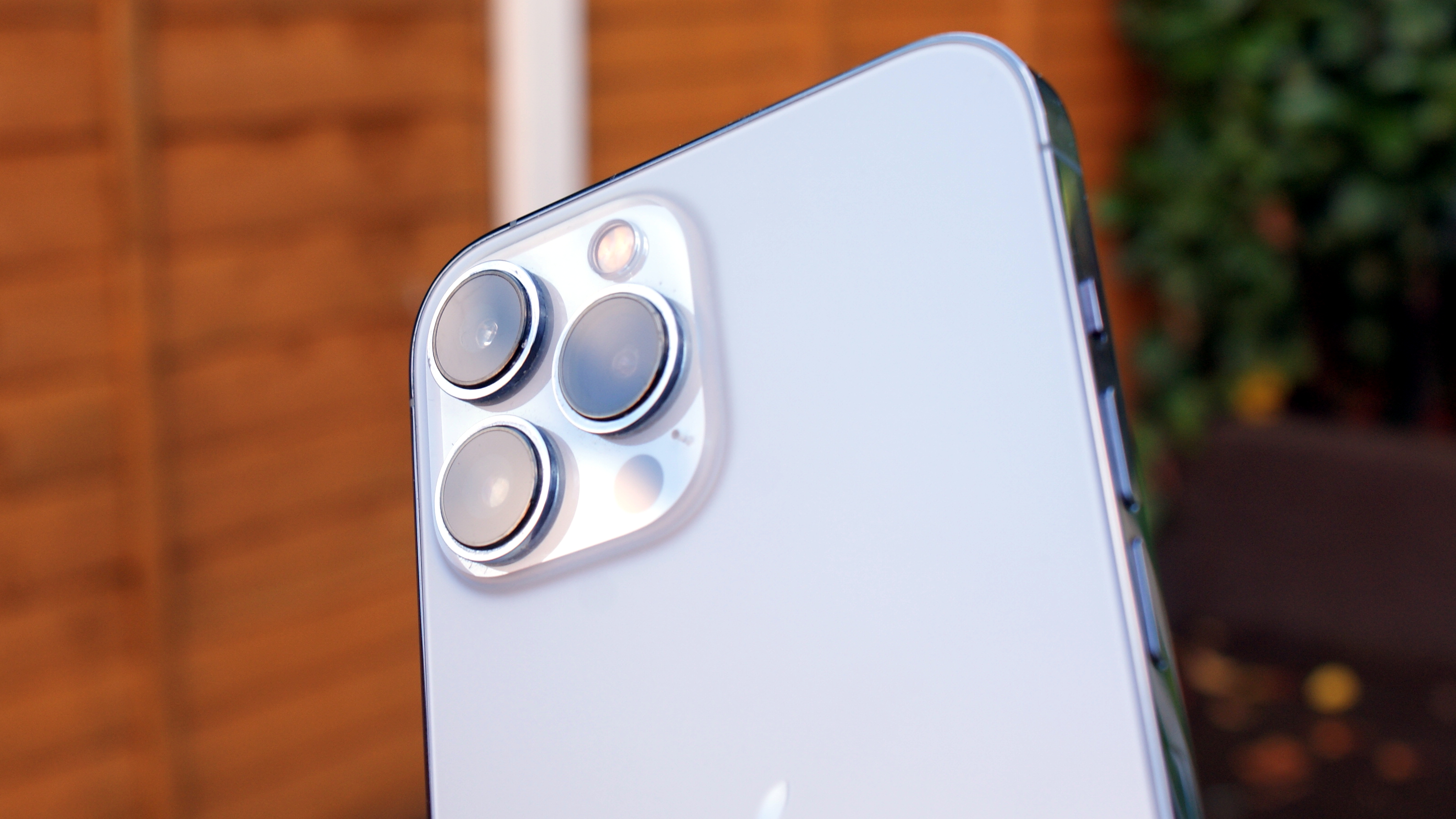
Apple has balanced an impressive amount of power with ease of use, so you can take great snaps in auto mode, but you’re also easily able to play around with various settings for a more hands-on experience.
However, we're not taken with the new Cinematic mode, which will automatically shift focus depending on where people are looking – it's cool, but it doesn't really add much.
Finally, another reason to save up and buy the iPhone 13 Pro Max is its performance – it's ridiculously powerful, and is able to play games to a high graphical standard and perform intensive tasks like encoding video at a pretty nifty rate.
Most people buying this phone will never scratch the surface of what it can truly do, but videographers will really appreciate the increased storage, the number of shooting options and speed at which it can process edits.
Want more than a two-minute review? Read on to find out how the iPhone 13 Pro Max performed in our in-depth testing – the results of our battery life and camera tests in particular are pretty impressive.
- Read our iPhone 13 review - Apple's stepped up the 'base' model
- Read our hands on iPhone 13 mini review - battery woes solved?
- Read our hands on iPhone 13 Pro review - smaller than the Max, better value?
iPhone 13 Pro Max release date and price
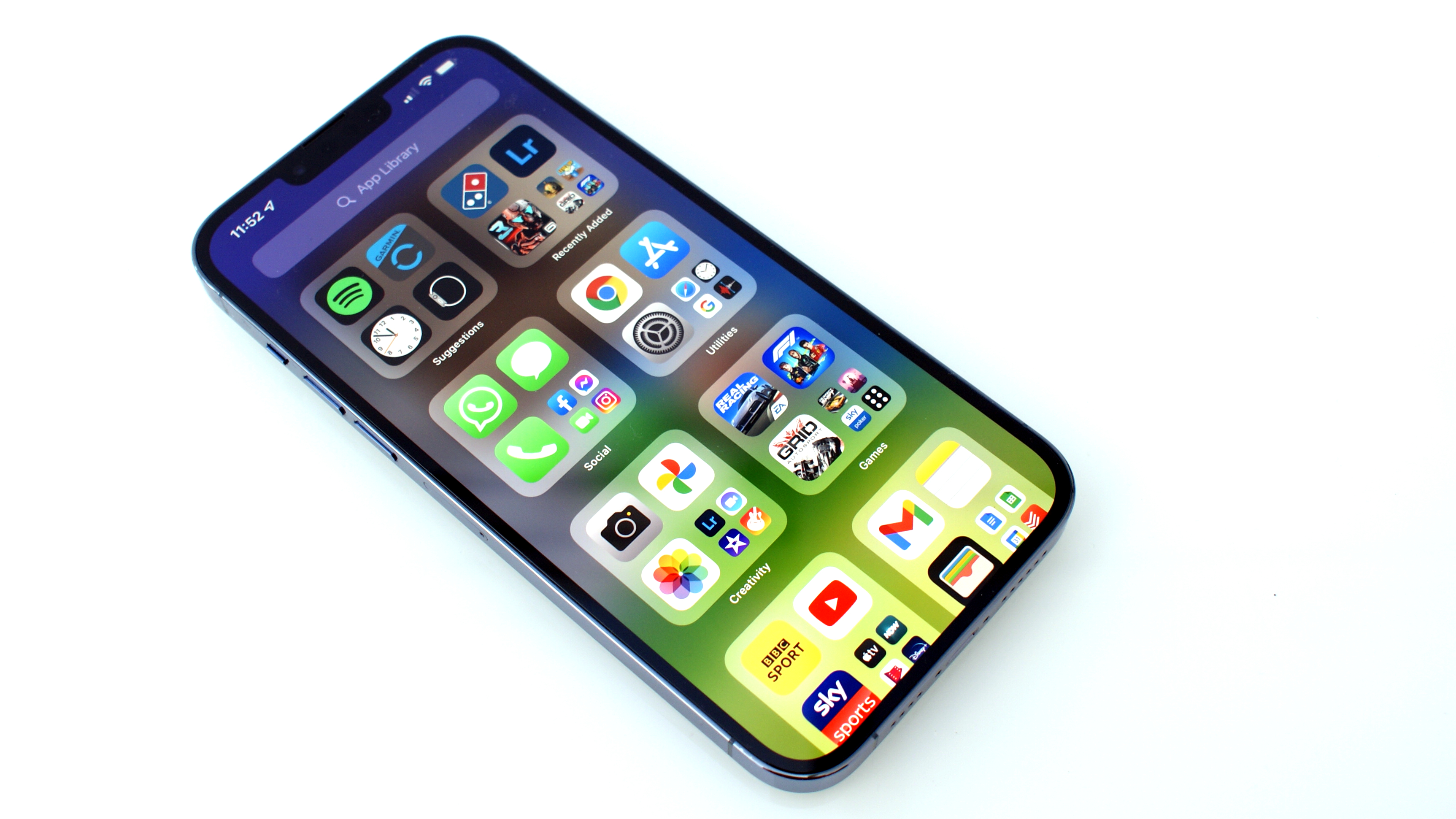
The iPhone 13 Pro Max was unveiled on September 14, and you’ve been able to buy the handset from September 24. The 13 Pro Max is the most expensive iPhone you can buy right now, with the cheapest model (128GB of storage) costing $1,099 / £1,049 / AU$1,849.
The 256GB model costs $1,199 / £1,149 / AU$2,019, the 512GB variant costs $1,399 / £1,349 / AU$2,369, and the 1TB model costs $1,599 / £1,549 / AU$2,719.
This isn’t the first time we’ve seen a 1TB smartphone, but it is the first time Apple has offered that much storage – and it’s going to cost you, so think carefully about whether you really need that much space.
Really, 1TB is only for those who are going to be using the iPhone 13 Pro Max for movie making and generating reams of 4K video at 60 frames per second, or thousands of maximum-resolution photos; most people won’t need more than 512GB.
- Compare the best iPhone 13 Pro Max deals available
Design - more of the same
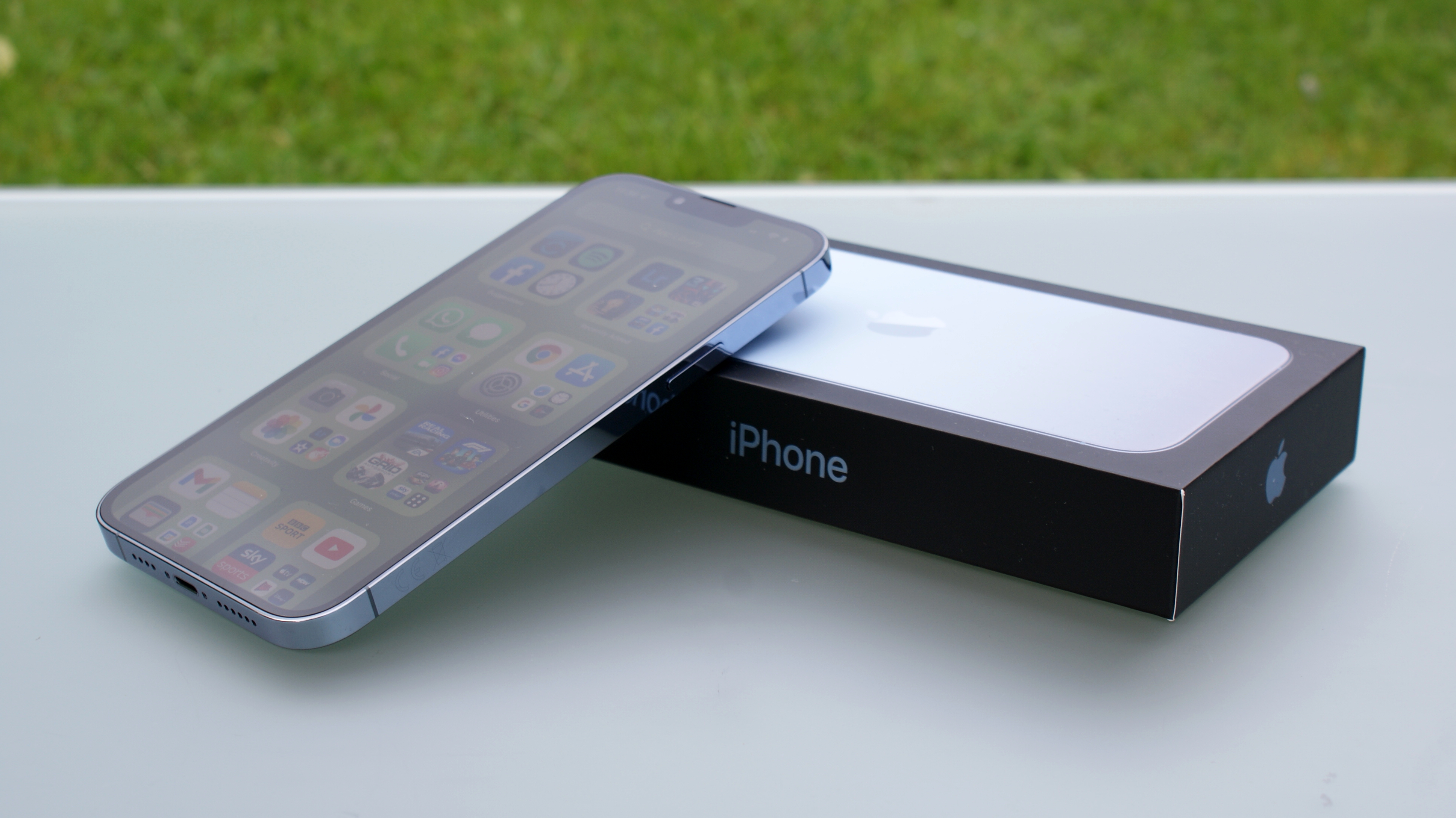
We’ll get this out of the way now: if you’re looking at the iPhone 13 Pro Max as your next phone, you surely have to know you’re getting a massive handset. And it is massive. This is not a phone for those wanting something that you can wrap a hand around or even reach a thumb the whole way across - you want screen, you want battery, and you’re ready to sacrifice the feel in the hand for it.
Let’s start by looking at how it’s put together. The stainless steel outer band, first seen on the iPhone 12 range last year, is back again, aping the design of the iPad Pro range for the last few years.
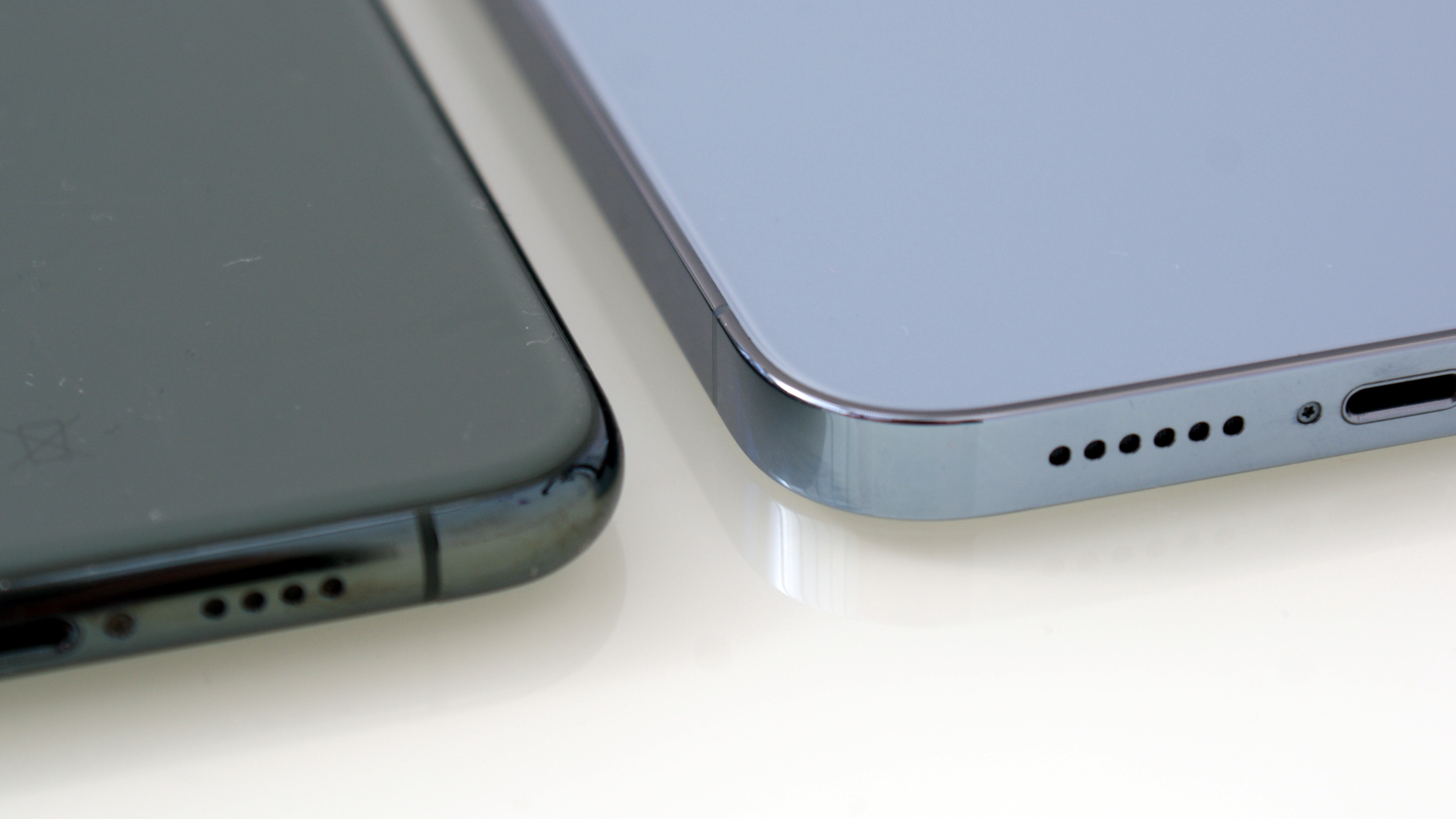
Even after a year, we’re still missing the curved back of the previous iPhone models, first seen on the iPhone 6. Yes, there’s a nice grippiness to the sharper, more industrial-looking edges of the new iPhone 13 Pro Max, and change is always welcome in the world of smartphone design, but it just feels less comfortable to hold.
Speaking of comfort, while we assume that you’re okay with the idea of the larger handset if you’re plumping for the iPhone 13 Pro Max, unless you’ve got very large hands it can be a bit of a challenge to wield.
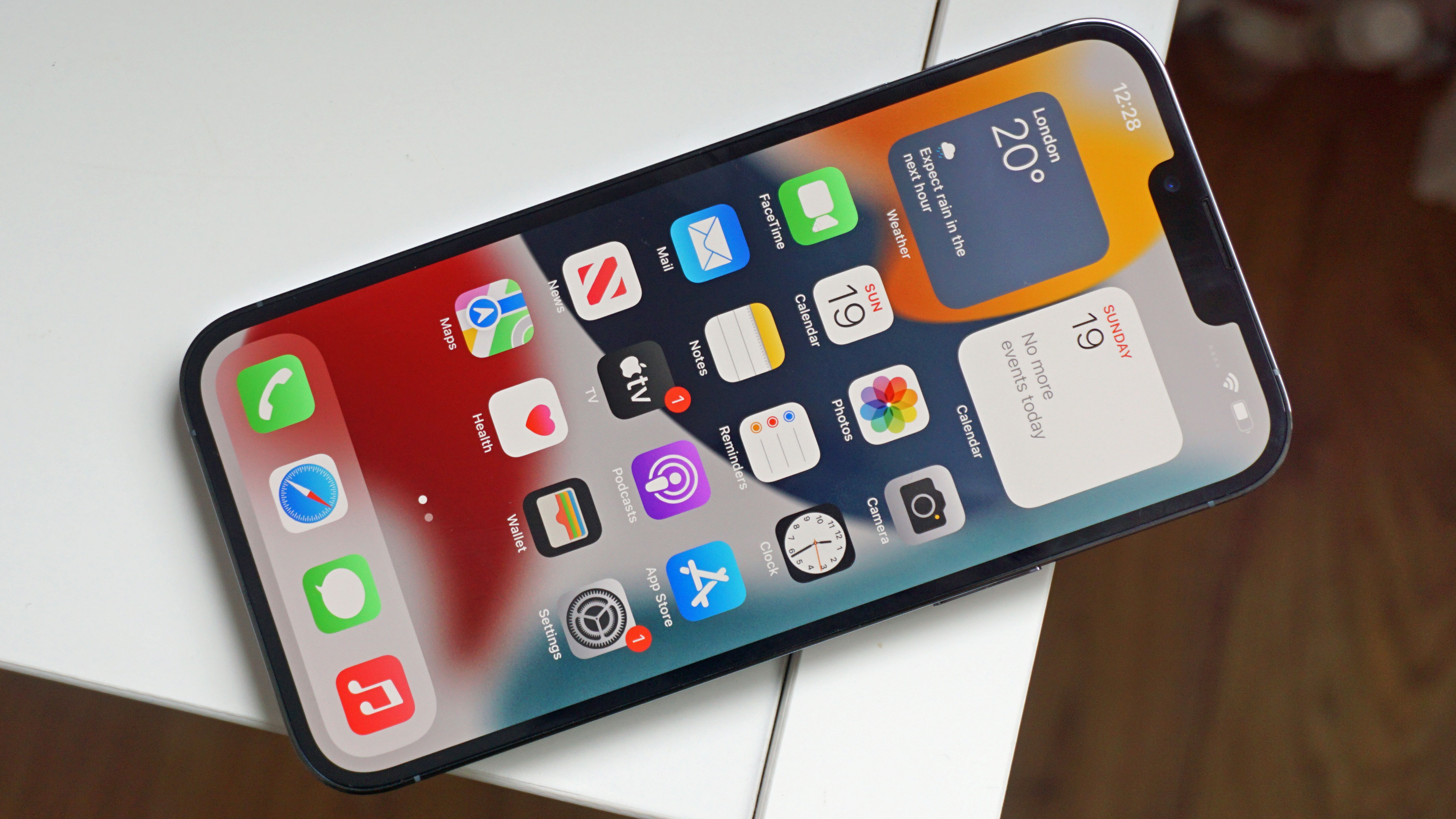
We’ve noticed that using the phone for extended periods can stretch the fingers a little further than normal, and that can lead to some slight aches; our digits adapted over time, but it’s worth being aware of if you’ve decided you just want ‘that iPhone with the really long-lasting battery’.
The Lightning connector remains at the base of the phone, flanked by the speaker (well, one of them – the other is in the earpiece, and does a thoroughly good job of dispensing sound when you’re watching movies or listening to music).
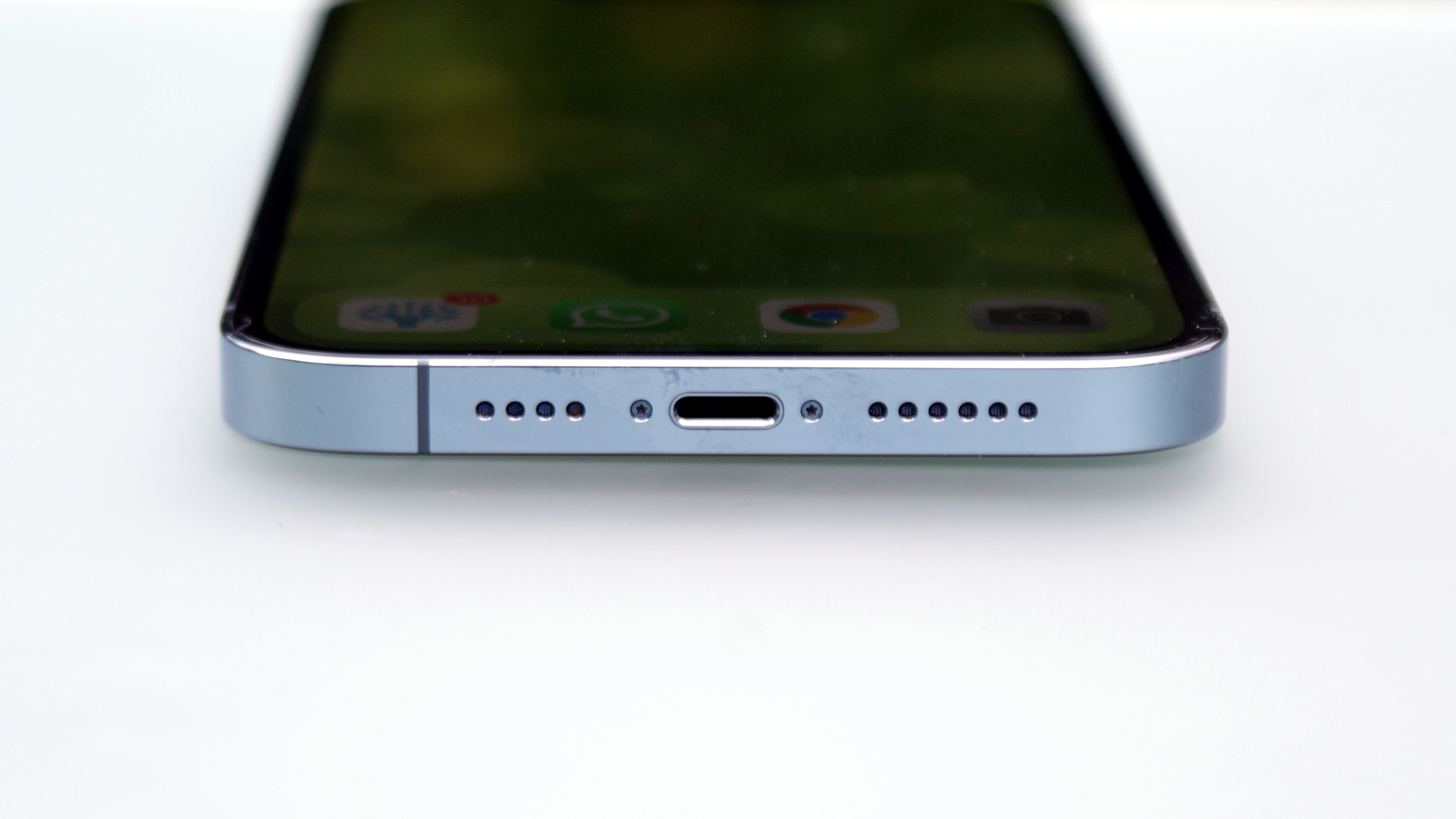
While there would be numerous advantages to Apple switching the iPhone to USB-C at the bottom (faster charging and data transmission for one) it would clearly incur the wrath of a lot of people with iPhone chargers kicking around, so the miss isn’t really that strongly felt at this time.
We were sent the Sierra Blue version of the iPhone 13 Pro Max and, like the other colors in the range (graphite, gold and silver), it’s on the muted side to allow those who need to do more ‘professional’ things (like carry briefcases and have a weekly lunch with Tomi from Accounts) to have the phone in meetings and the like.
The blue is a strong addition to the line-up in the iPhone Pro range, but despite the phone having Apple’s super-tough Ceramic Shield on the front, we would still suggest you pop this thing in a case.
We still managed to dull the edges off the iPhone 12 Pro Max, as well as scratching the front screen, over the course of a few months’ use – so while the 13 Pro Max is a more robust phone than iPhones from years ago, we still think it’s worth protecting your investment.
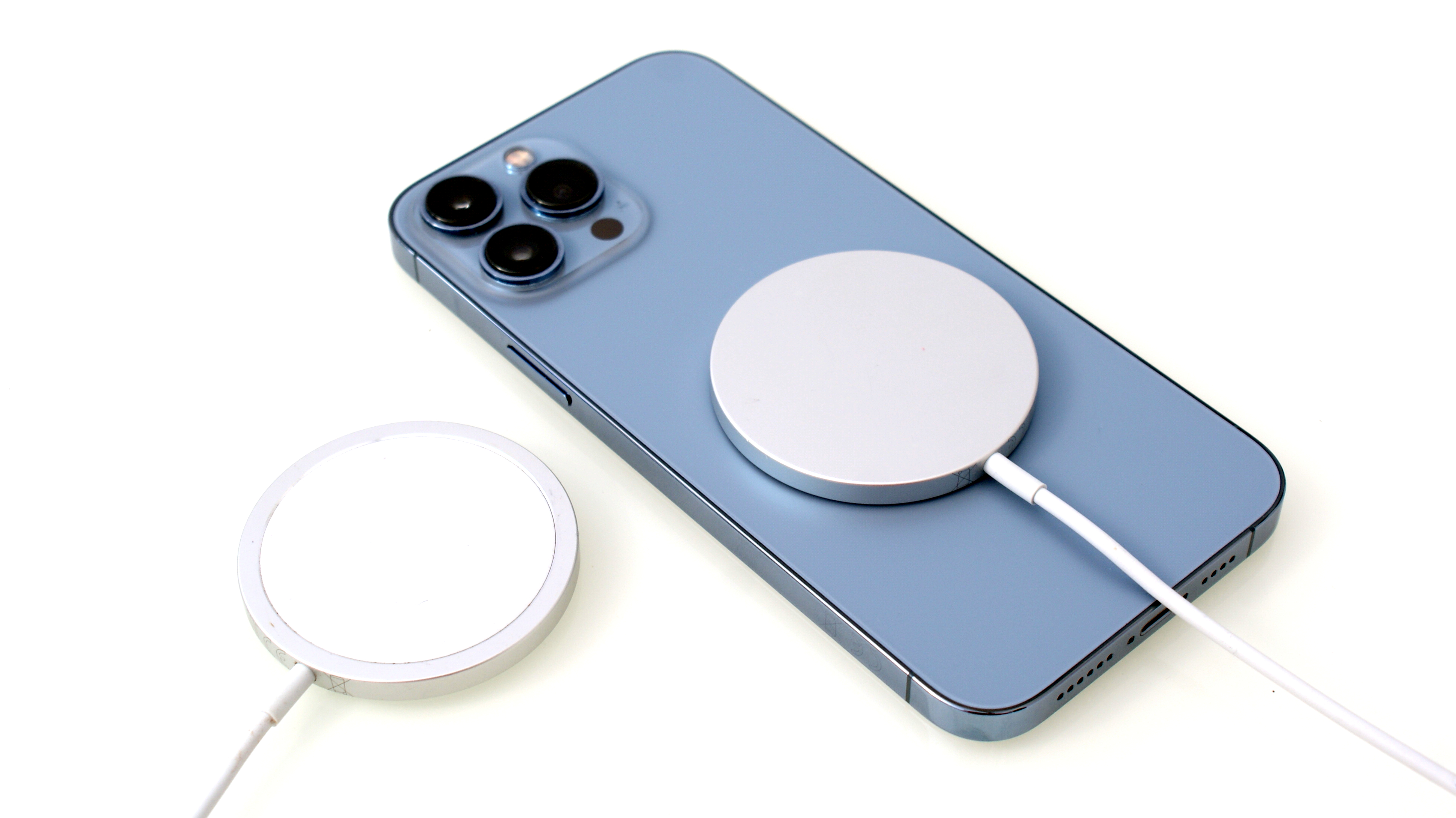
MagSafe, the magnetic connection on the back of the new iPhone range that allows you to wirelessly connect chargers and other accessories, also returns – and it’s becoming more of a selling point.
We’re still not seeing swathes of MagSafe accessories on the market just yet, but that makes sense given that, other than the new iPhones, only the iPhone 12 range supports it.
Now there are four more phones that use MagSafe, expect more cases, stands, controllers and gimbals to appear – and it’s really cool to just slip on the round metal disc and see your phone start charging instantly.
iPhone 13 Pro Max display - brighter, but 120Hz misses
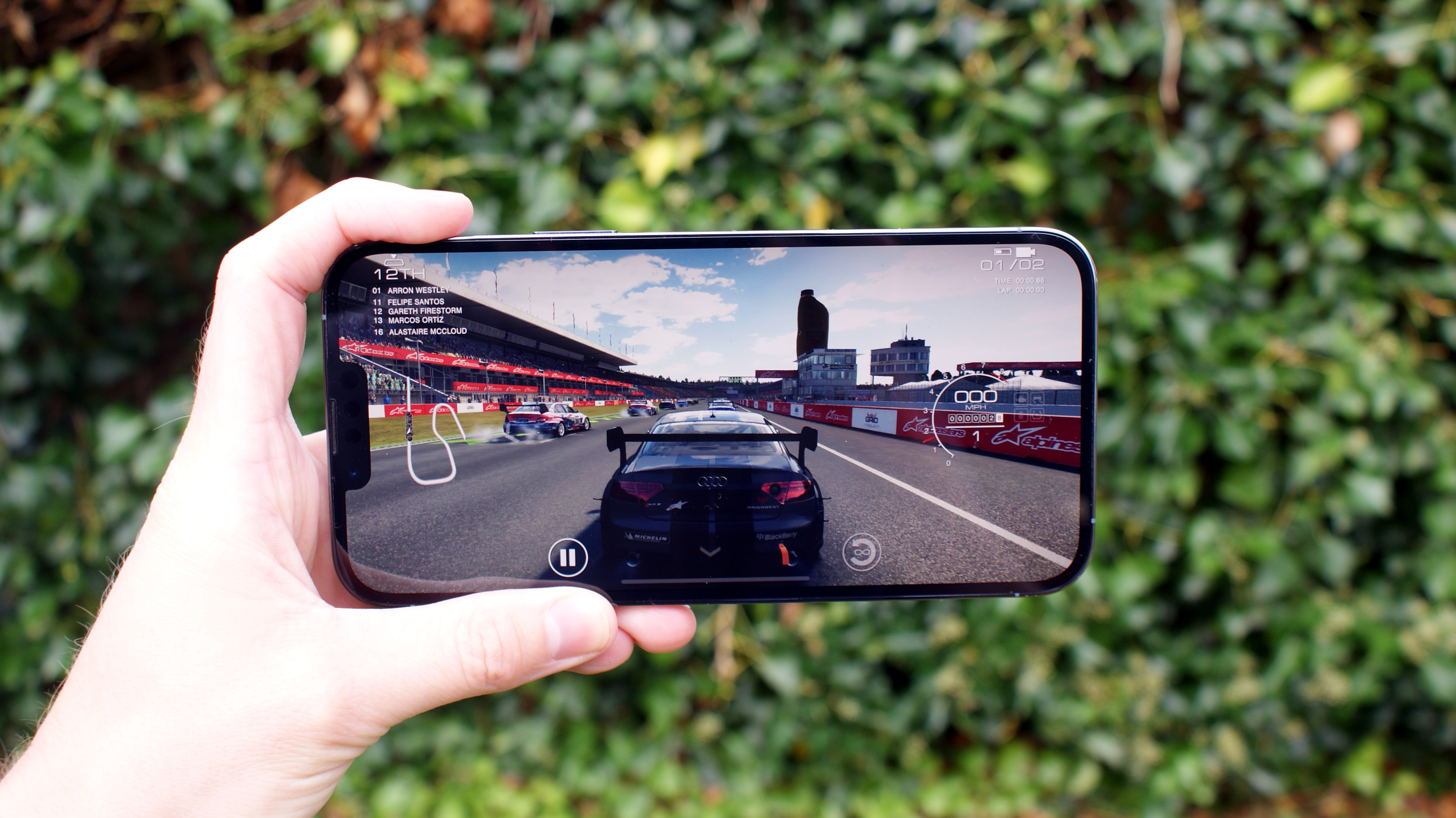
There are three key changes to the 6.7-inch display on the iPhone 13 Pro Max that are worth discussing: the smaller notch, a screen that refreshes at up to 120Hz (meaning smoother scrolling and transitions throughout) and improved brightness when frolicking outdoors in the sunny sunshine.
The reduced size of the notch is the most obvious of the three, and while it’s welcome it doesn’t really change a lot in terms of the iPhone design – there’s still a notch encroaching on your movies and games, where other brands are playing with smaller punch-holes and even completely invisible cameras.
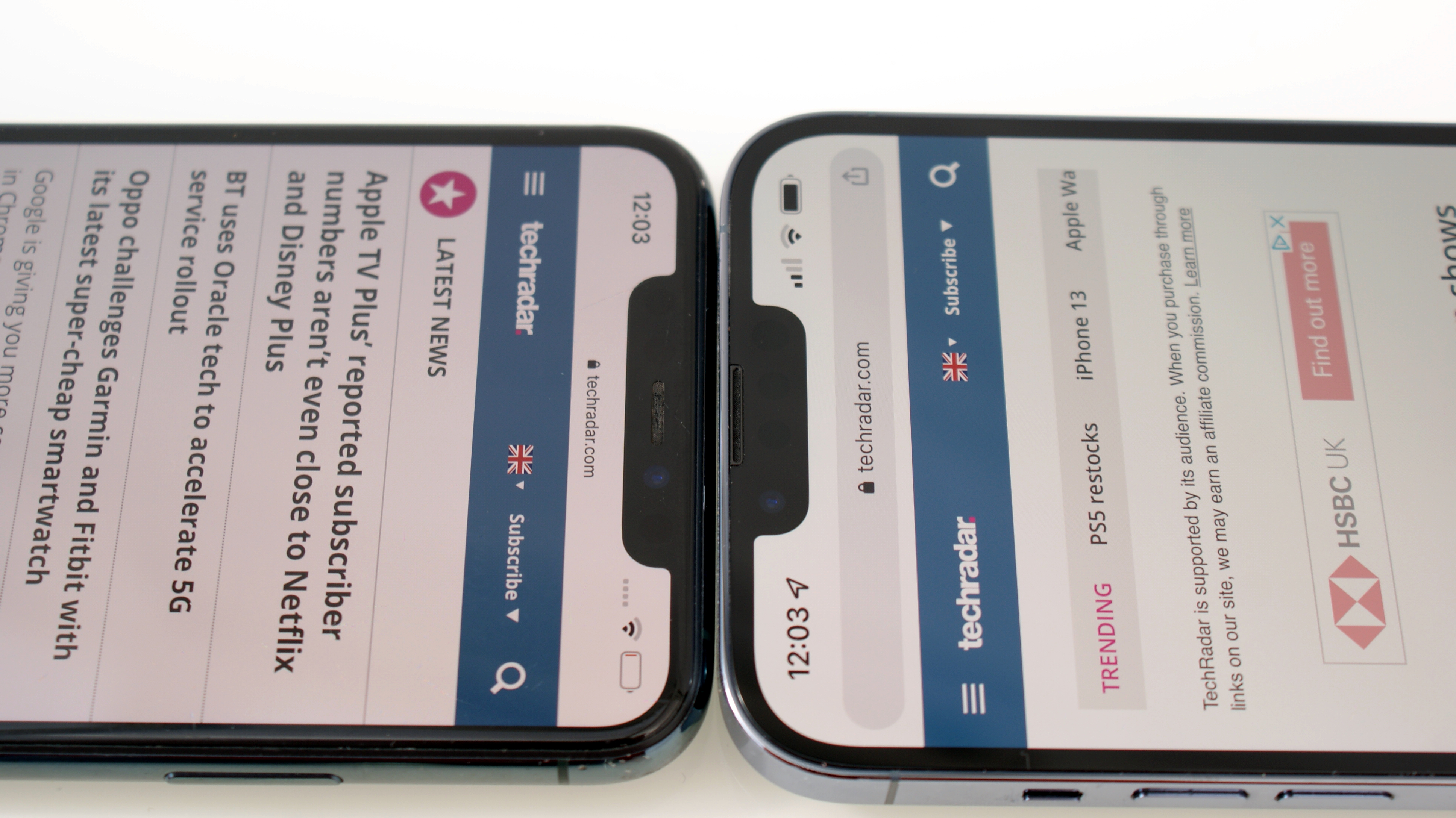
That said, we’re not saying the notch is without its merits – when you find that you’re able to unlock your phone with your face from a surprising angle (where you think ‘surely it can’t pick my face up from here’), you can forgive the need for multiple sensors to be wedged in at the top of the screen.
We’d like to see Apple miniaturize this a little more though, and get the cameras and sensors into the rim of the phone – or at least let us see the battery percentage shown constantly, rather than having to swipe down. When we heard word of a smaller notch coming, we had hoped that the little beacon of battery life would be a constant option, but sadly no.
Apple’s 120Hz display technology is called ProMotion, and has been used on the iPad Pro range for years. It’s surprising that it’s taken this long to appear on an iPhone, simply because the technology clearly exists within Apple, and because most rivals have had it on flagship and even some mid-range phones for a while now.
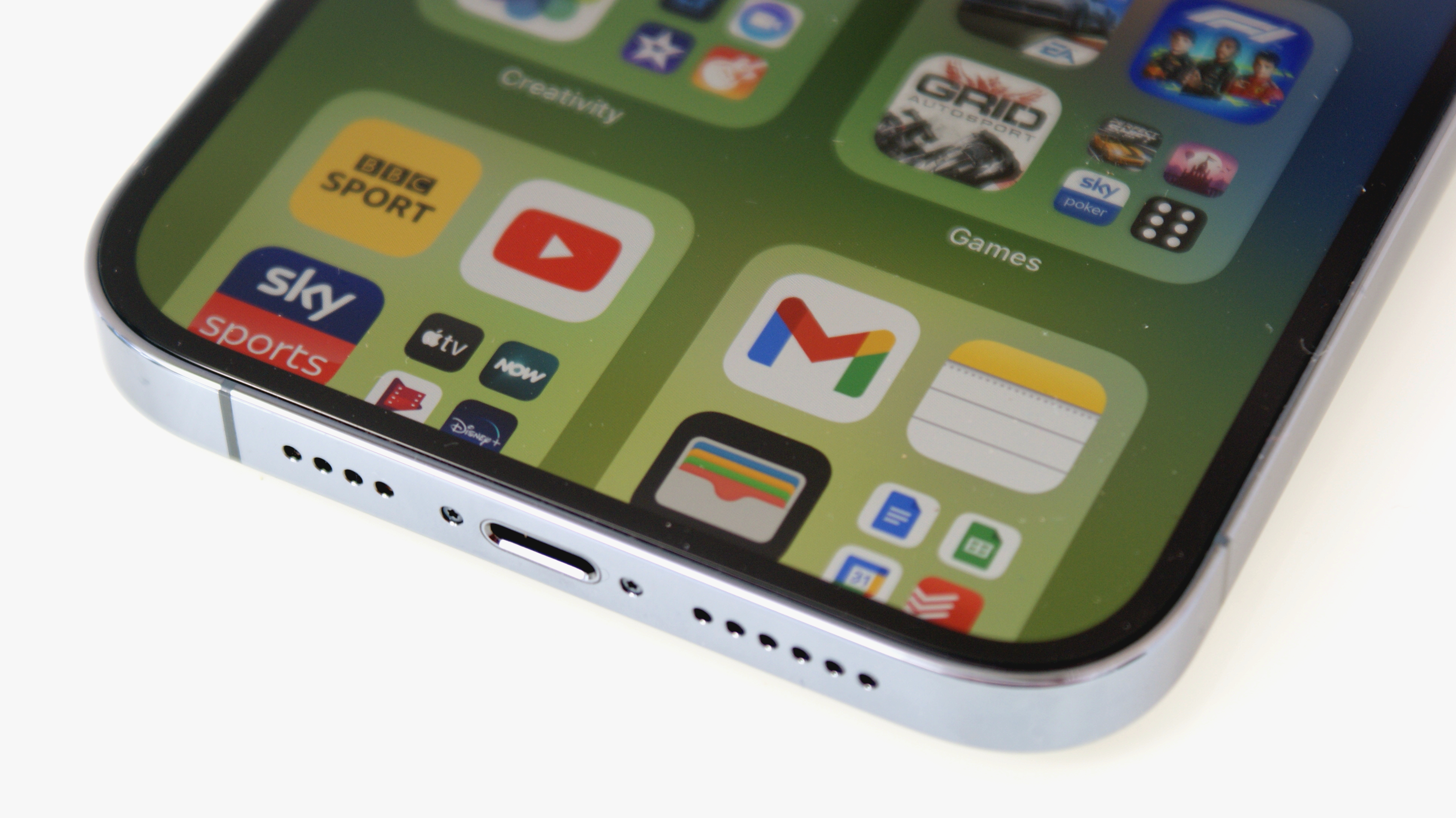
However, we can also see why Apple has eschewed its presence until now – it comes at the cost of battery life, and, to our eyes, doesn’t always add a lot to the browsing experience.
A quick explainer if you need it: the refresh rate is the amount of time your screen will show a new image per second – 120Hz means you’ll see 120 images per second, which means that scrolling a web page or flipping through Twitter will be smoother.
However, often you don’t need that high refresh rate if you’re just looking at a static image, so Apple has made the feature dynamic, with the phone intelligently deciding the refresh rate, and dropping down to 10Hz when needed to save battery life.
A 120Hz display is definitely a luxury extra rather than a must-have feature, and in our scrolling tests we noticed that things didn’t always look that much smoother compared to the screen on the 11 Pro Max – when you peer closely you can see the difference, but in reality it isn’t a huge change.
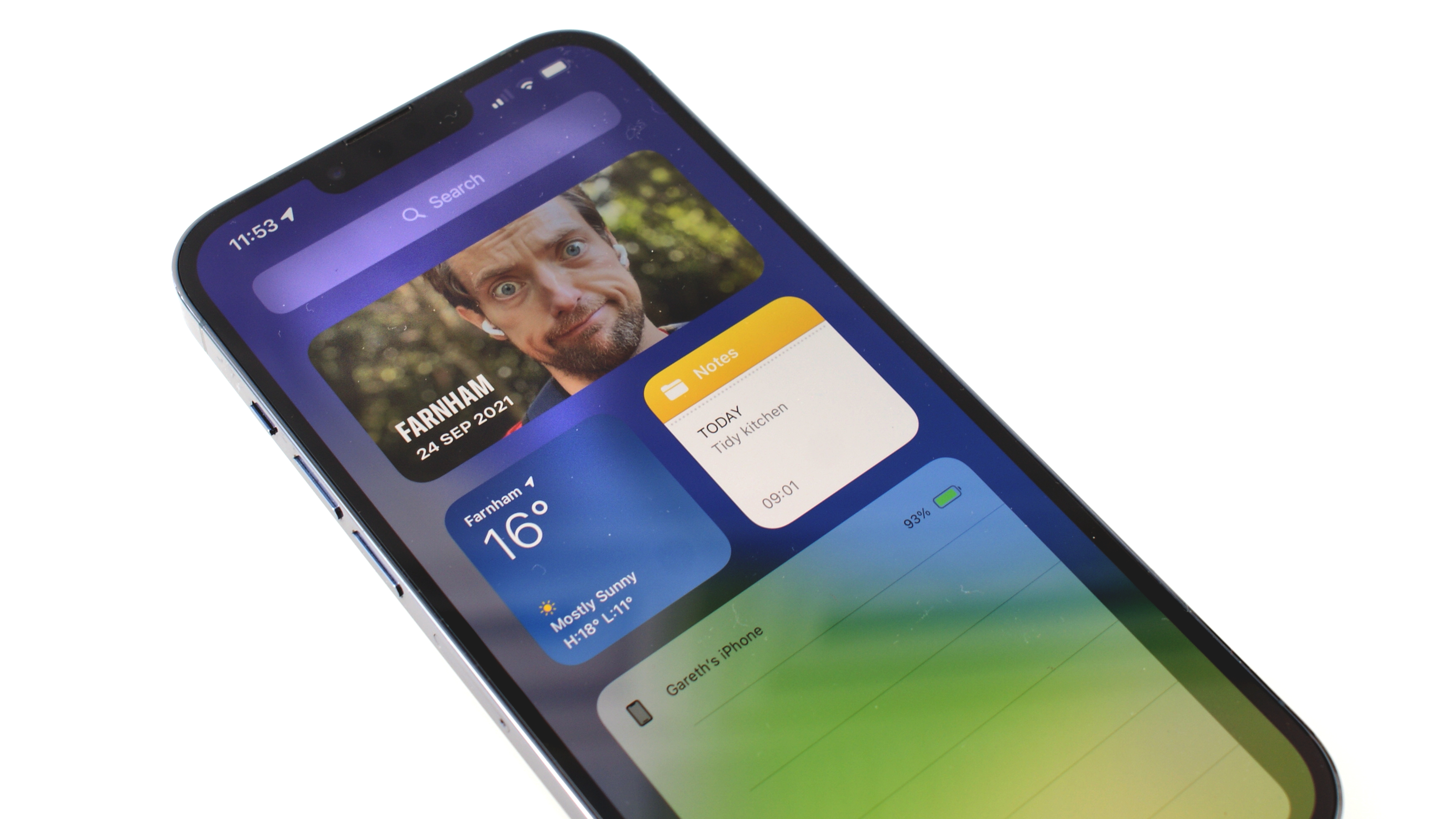
What was noticeable was that the screen scrolled in a far more ‘stable’ way, meaning that our finger flicks were far more accurate, and we didn’t send the rows of text flying around with the merest quiver of a digit. Text was also clearer as it flew by, showing that there is a benefit here, even if it's a modest one.
While we have called this a luxury feature, the iPhone 13 Pro Max is presented as one of the most luxurious phones on the market, so a 120Hz screen is something that Apple really should have added by now, and its presence feels more like a box-tick than an impressive new feature.
Another purported advantage of a 120Hz screen is for gaming – the increased frame rate is supposed to yield superior play thanks to smoother motion and the ability to react that much quicker in games – but quite honestly, we couldn’t see a difference compared to older screens.
We chose Aldo’s Odyssey and Grid Autosport to test the feature out, and both looked – and played – identically to on the 11 Pro Max, with the smoothness and graphical performance appearing to be exactly the same.
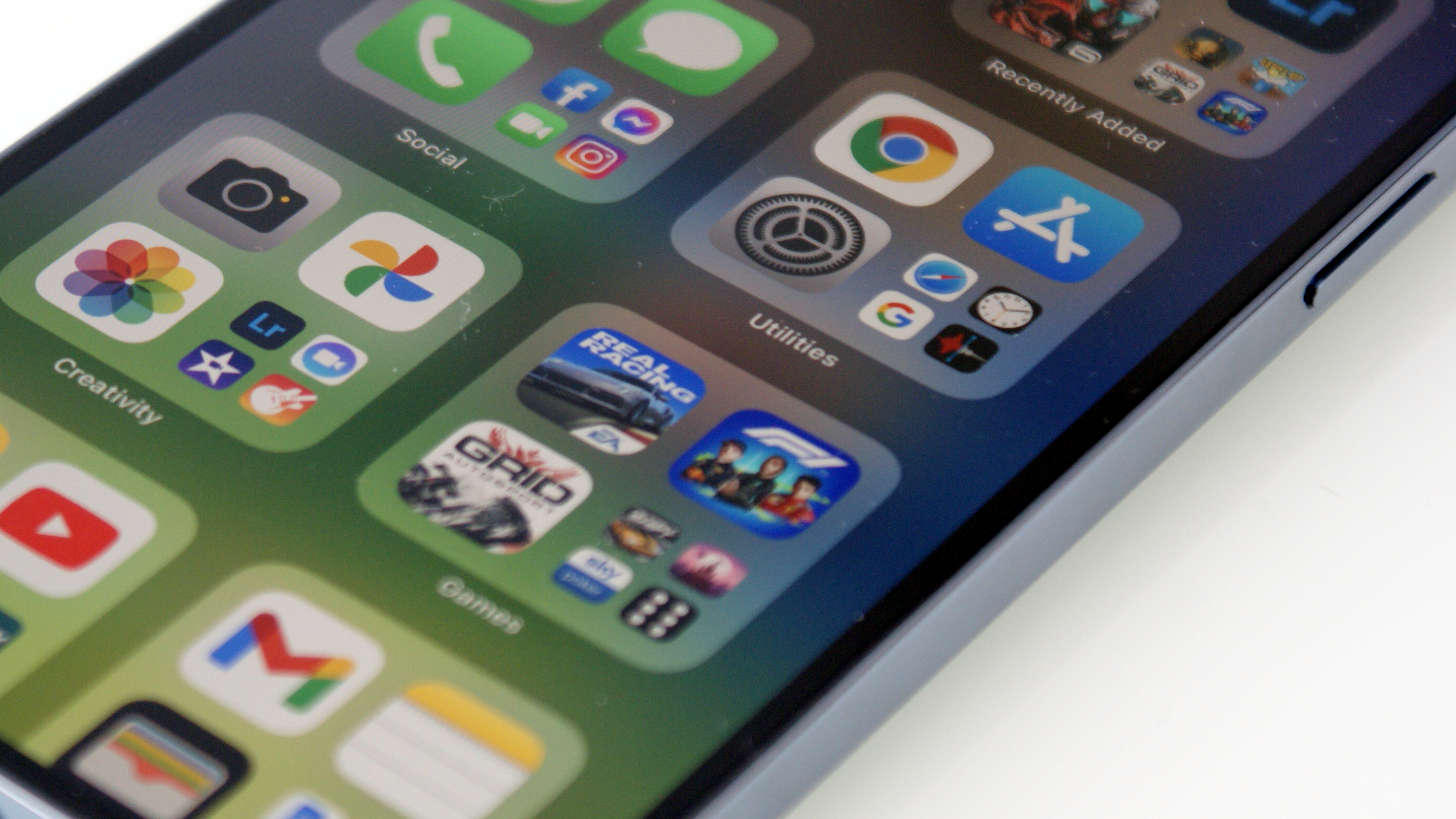
Don’t get us wrong, it looks good, but it’s hard to see what 120Hz is adding here other than a touch more fluidity. Developers will likely need to optimize some games to make full use of the slickness of 120Hz, so perhaps that’s what we’re seeing here - we’ve asked for more clarification.
Apple is also touting greater outdoor brightness on the iPhone 13 Pro Max, with higher peak levels of 1200 nits (read: brighter than a lot of other smartphones out there). Compared to the 11 Pro Max, it was easier to see what was on the screen in brighter conditions, although it’s still something of a squint-fest when you’re trying to watch a movie in direct sunlight.
However, that screen brightness increase makes the 13 Pro Max more usable than any iPhone before it and a good example of Apple focusing on the changes that really will make a difference in day-to-day use.
Underpinning all these changes is the fact the iPhone 13 Pro Max has a stunning OLED display, with incredibly rich color reproduction and great use of things like Dolby Vision playback for when you want to watch movies with that extra level of detail and clarity.
The effect is pretty stunning – even though it's not that new, as the iPhone and many other smartphones have had great screens for many years – and it’s worth remembering that you’re getting a phone that’s a genuine alternative to watching on the big screen when it comes to quality.
We noticed that Apple’s changes to the brightness of the screen are minor, but noticeable when you place the iPhone 13 Pro Max alongside an older phone. Interestingly Apple has wandered more towards more saturated colors with the latest display – particularly when showing off red elements of the image.
This is something that Samsung has always been famed for, so it’s intriguing to see Apple decide to add a little more artificial ‘pop’ to its displays with the iPhone 13 Pro range.
Battery life - finally good
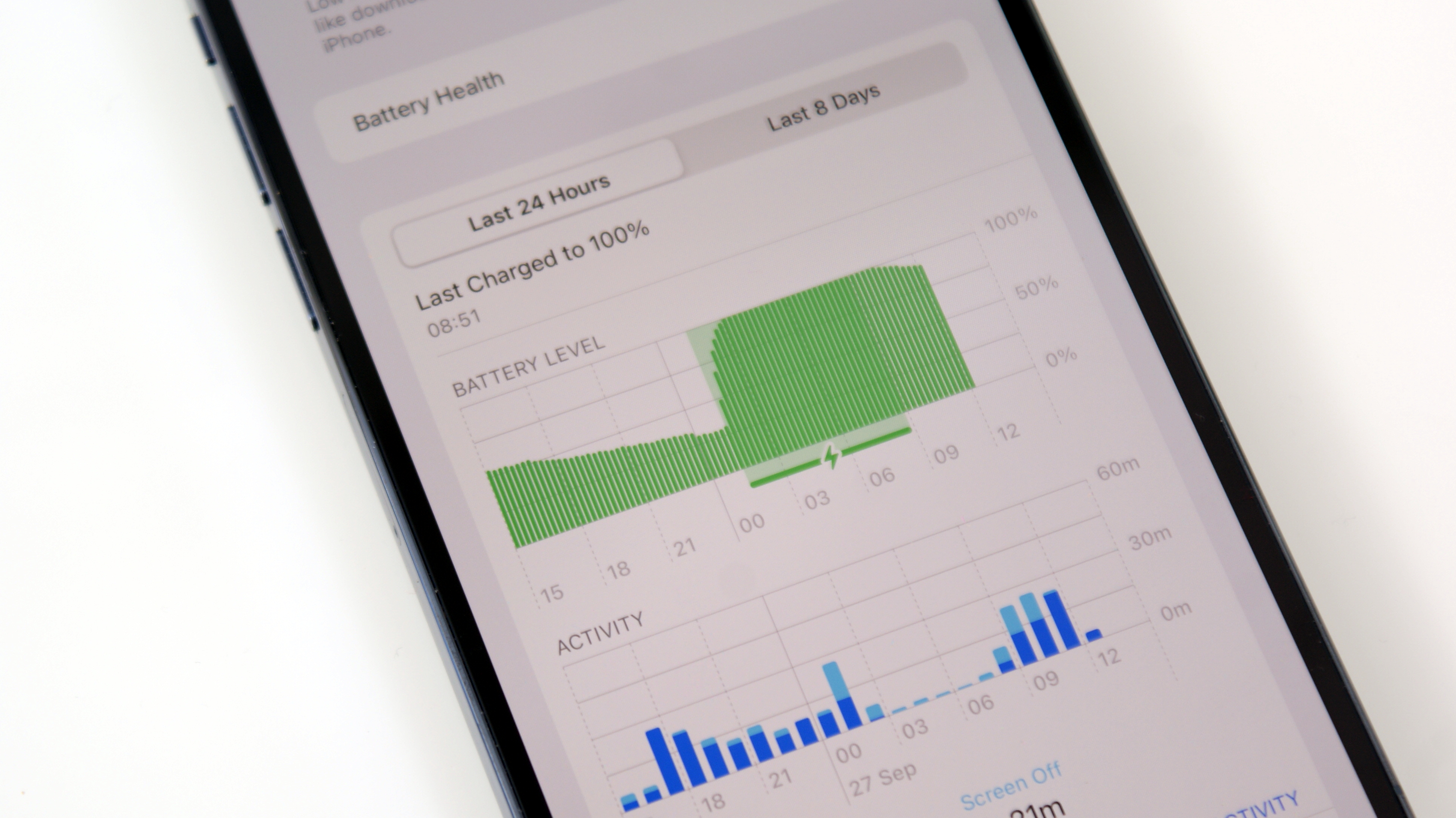
Let’s not beat around the bush here – you’ve already seen us say it, but the battery life of the iPhone 13 Pro Max is the biggest reason why you’d buy this phone.
Sure, you like the larger display to watch all your fancy movies and TikTok clips on, but in reality the notion of owning an iPhone with actually decent battery life is going to attract hordes of people to this model.
Why is everyone proclaiming that the iPhone 13 Pro Max battery life is so good? Well, it just feels robust. On a day of ‘middling’ use – mostly consisting of web browsing and music streaming over Wi-Fi, with three trips out for running and picking up kids from school – we took the phone off charge at 7:30am, and only managed to kill it by 4am the next day by downloading two huge games… that’s 35 hours of battery life.
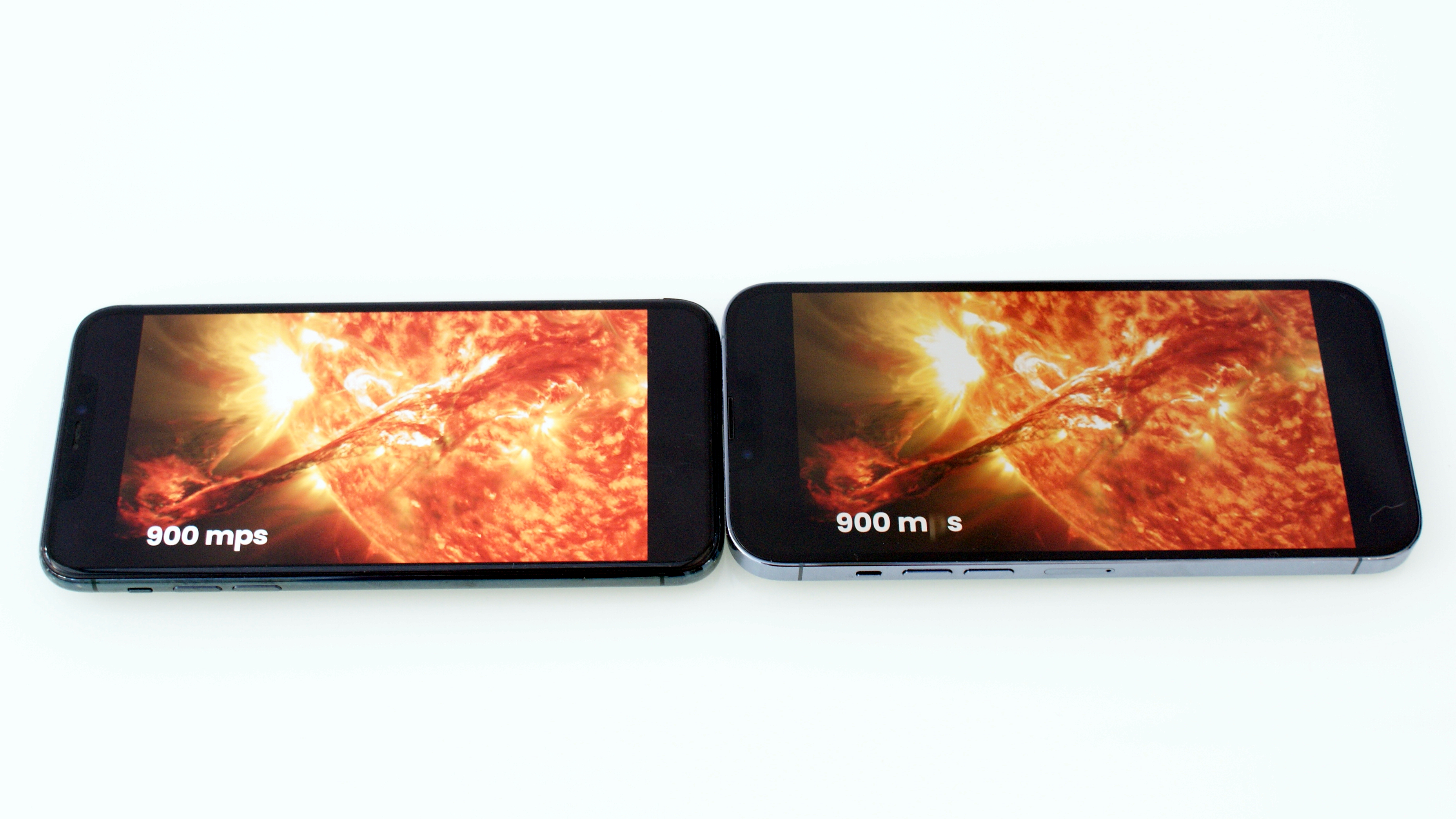
We performed a side-by-side test with the iPhone 11 Pro Max, starting with both phones at 100% battery, streaming two hours and 20 minutes of YouTube on full brightness. The older model (which, we must stress, has been used for over a year, so there will be some battery degradation) fell to 81% in that time, where the new Pro Max only dropped to 91%.
Even if you were feeling generous to the older iPhone, that’s a massive gulf in battery management.
We’re not claiming that the iPhone 13 Pro Max has bulletproof battery life – on a super-hard day of testing, which saw us using the camera for hours, running around with Spotify playing in the background, and going in and out of signal, making phone calls, running a YouTube test and generally fiddling about with the phone, we only managed to get 14 hours of use before reaching for the charger.
But don’t get us wrong: in day-to-day use, you’ll regularly find that you’ve got a good third of the battery left by the time you go to bed, even with a few heavier tasks like music streaming or navigating using Google Maps for a few hours, so you're less likely to need a power bank with this new phone.

In our lab testing we saw a score of 12 hours and 16 minutes for continuously browsing the web over a 5G connection until the battery was flat, which is pretty impressive, and the best we’ve seen from a flagship phone – the handsets that have performed better are usually cheaper phones that don’t have things like fast-charging capability.
Oh, while we’re on that subject… we’re still strongly of the opinion that Apple is being unfair by not including a charging block in the box with the iPhone 13 Pro Max. Yes, it definitely does save on waste from people having unnecessary chargers when many iPhone users likely have a few Lightning leads kicking around.
We also get why there’s a USB-C to Lightning cable in the box – so that users can connect easily to one of the new MacBooks or other laptops on the market. But that lead also facilitates the faster charging this phone is capable of, meaning you’ll want to buy the 20W charging block to get that sweet juice into your phone quickly.
It would be better if Apple gave you the option of whether or not to have a charger at purchase – either giving you a small discount for not having one, or just a general sense of being a good person and helping the planet. (Although, in fairness, keeping the cost of the phone the same as last year is a pretty good move when there are some decent hardware upgrades in the mix).
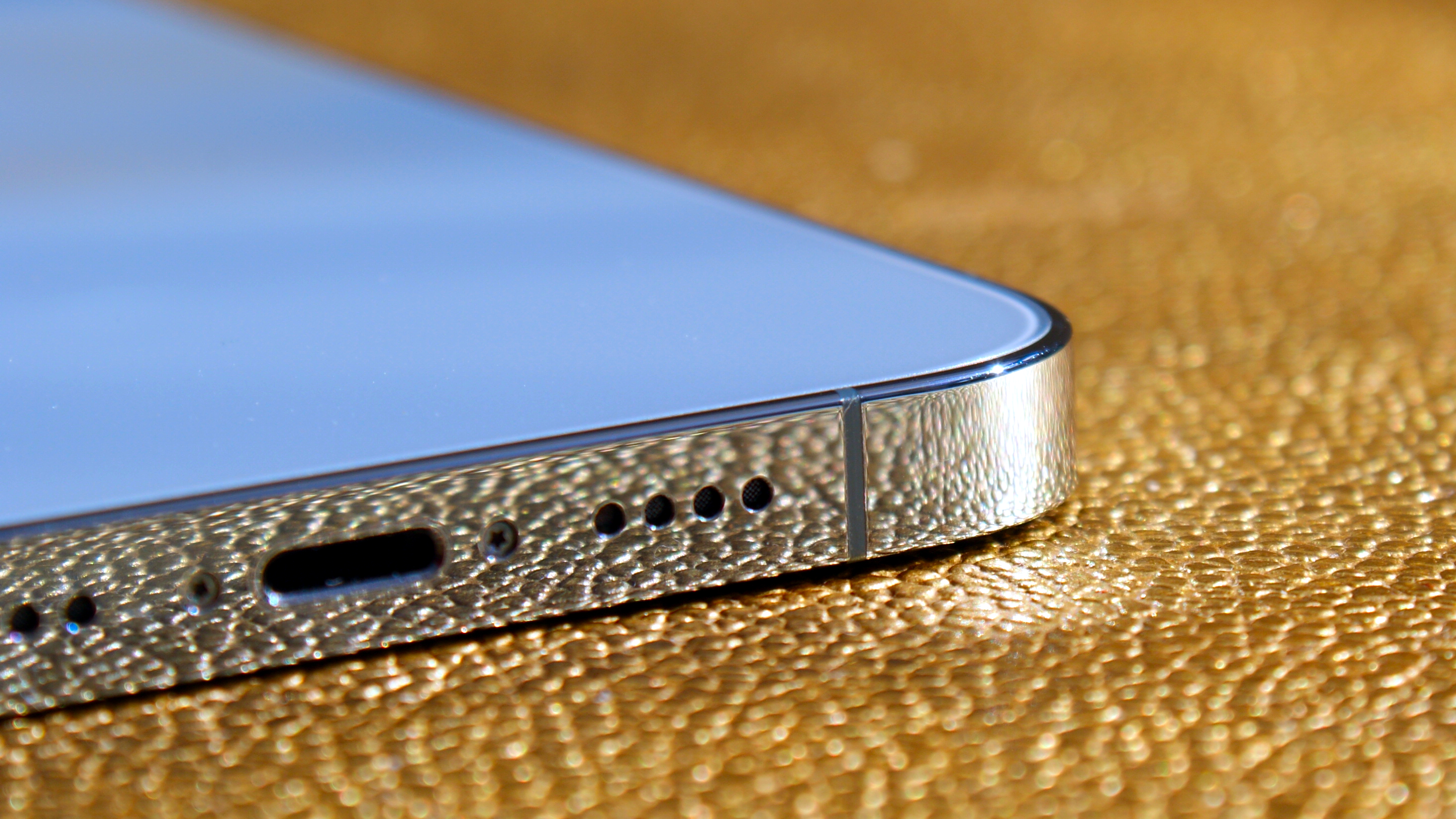
Why would you want that faster charger? Well, if you suddenly remember that you’re useless at life and have let your phone run out of battery, we found that in 15 minutes we could replenish the phone to a third full – enough for up to 10 hours of use, based on our testing.
Another 15 minutes on the charger got the phone up to 53%, showing that the fast charger is definitely worth it. However, the rate of charging slows down after that, with the phone getting to around 80% after an hour, and then requiring another 80 minutes to get to 100%.
The larger iPhones have always been the longest-lasting in each range, obviously, but this battery performance is a level above for a phone made by Apple.
It finally removes ‘Yes, but it hasn’t got very good battery life’ from the equation if you’re deciding between Apple and Android devices, as it’ll be more than serviceable for anyone who regularly charges nightly, and will save the bacon of those ‘forgetful chargers’ who don’t top up each night and then constantly pester you for a charger.
Camera - making tiny things amazing
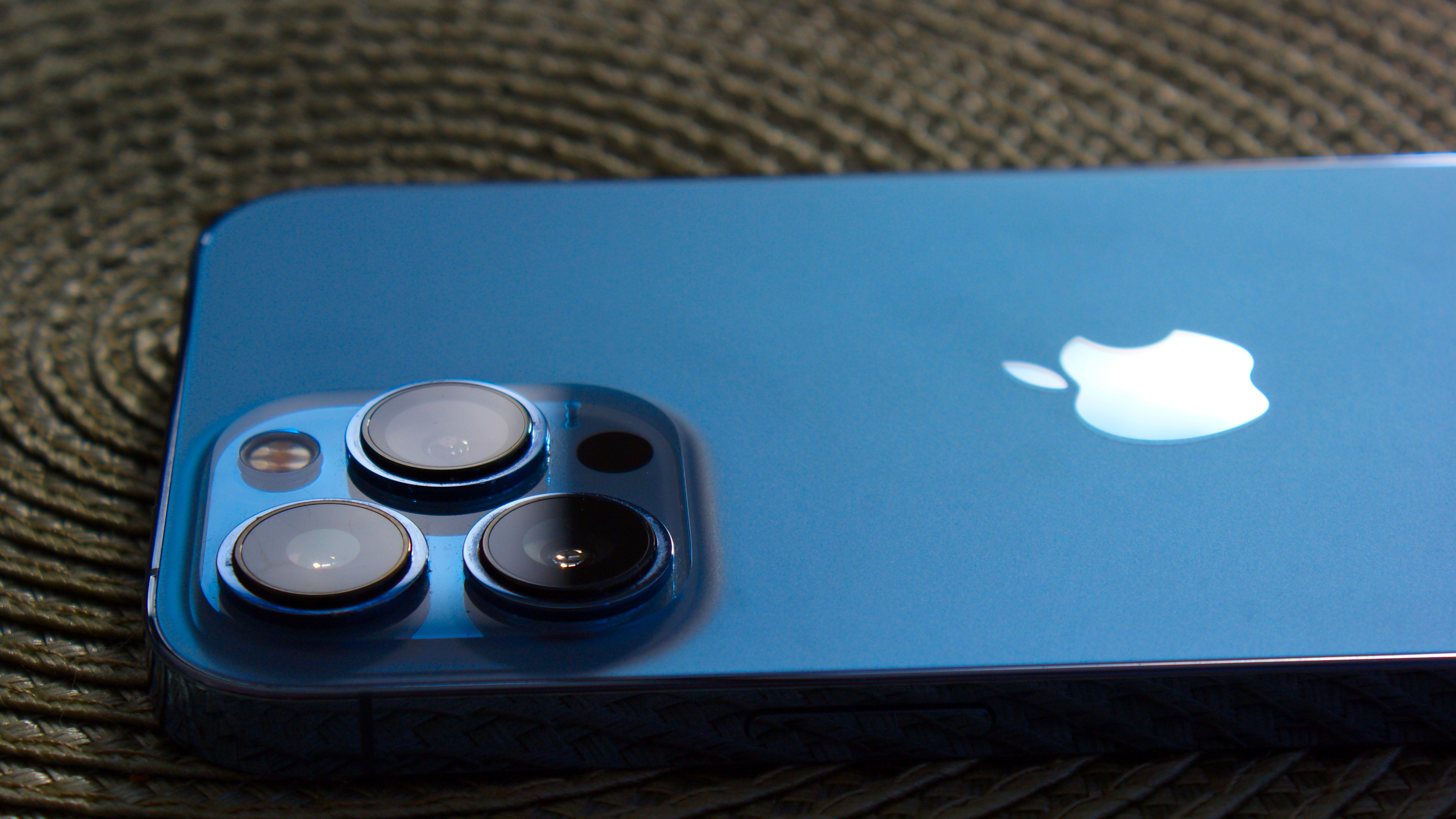
While we think the battery life is the real selling point of the iPhone 13 Pro Max, a close second is the camera offering – while the improvements here are only tweaks from the iPhone 12 Pro Max, those tweaks are useful and impressive in a number of ways and make it one of the best camera phones around.
Let’s run through the changes quickly: the main camera (which Apple calls the Wide camera, confusingly) has a 12MP sensor, with larger 1.9μm pixels placed on the largest sensor Apple’s ever put in a smartphone in order to absorb even more light, which combined with an f/1.5 aperture enables you to capture some seriously impressive low-light images, as you’ll see in the samples below.
The Ultra Wide sensor (which zooms out from the main image) has also been upgraded – the megapixel count here is also 12MP which is the same as last year, but it now packs Apple’s Night Mode functionality, with the phone able to take some breathtaking photos in near-pitch black situations, as long as you’re able to hold the handset perfectly still for the necessary amount of time.
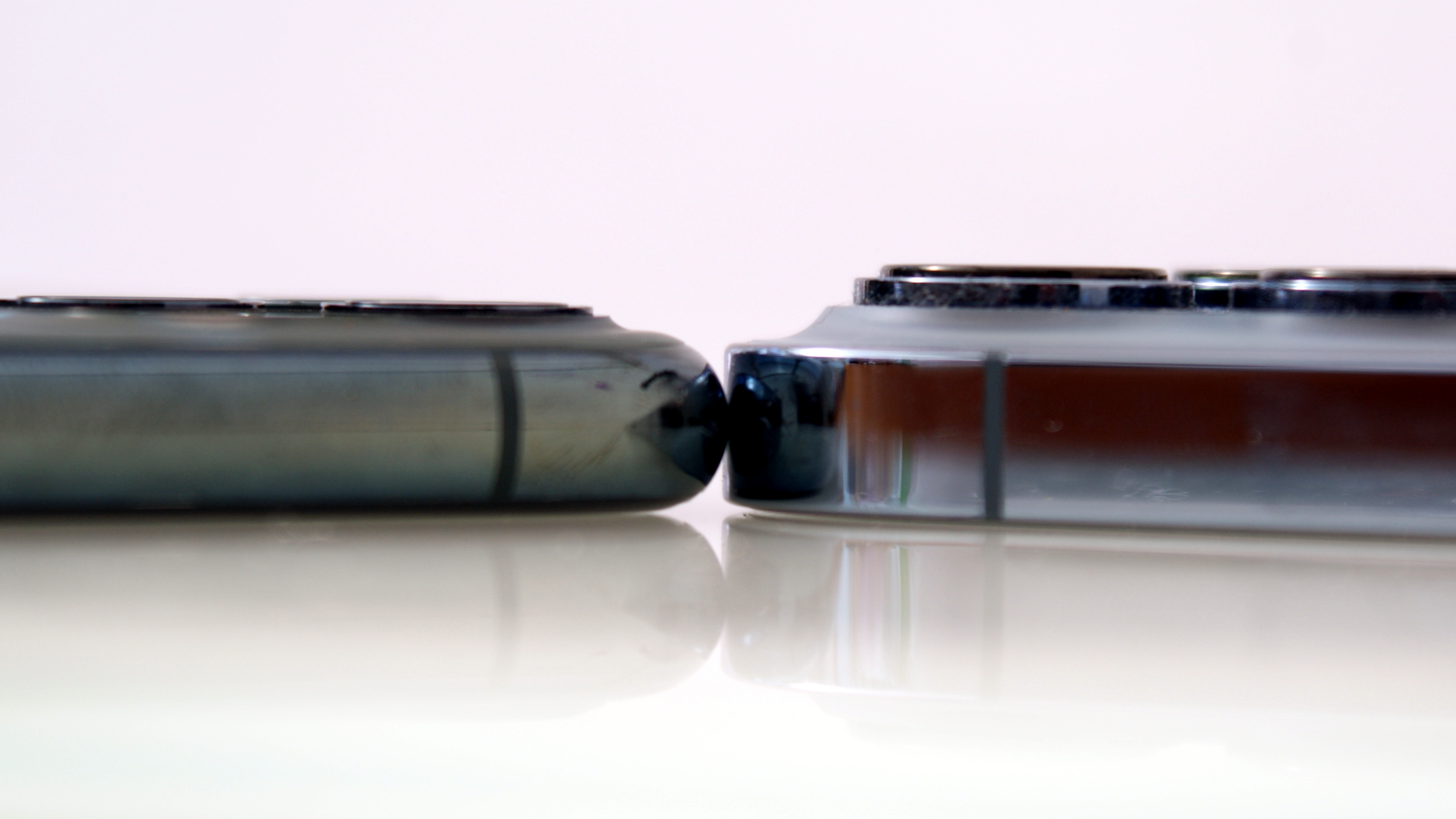
The Telephoto lens, the one that can zoom in on distant objects, has been upgraded to be able to zoom in three times optically - meaning that it’s physically magnifying the image, rather than doing so digitally and creating a grainier shot. That’s a useful addition, but it’s a shame you can’t also do 2x zoom optically - as sometimes that would be preferable.
Sadly, the zoom distance is fixed, so you’ll need to make do - although the iPhone’s chipset does a pretty good job of cleaning up the digital zoom.
When it comes to the quality of the photos the iPhone 13 Pro Max is capable of producing day to day, there’s a clear and obvious improvement over last year’s model.
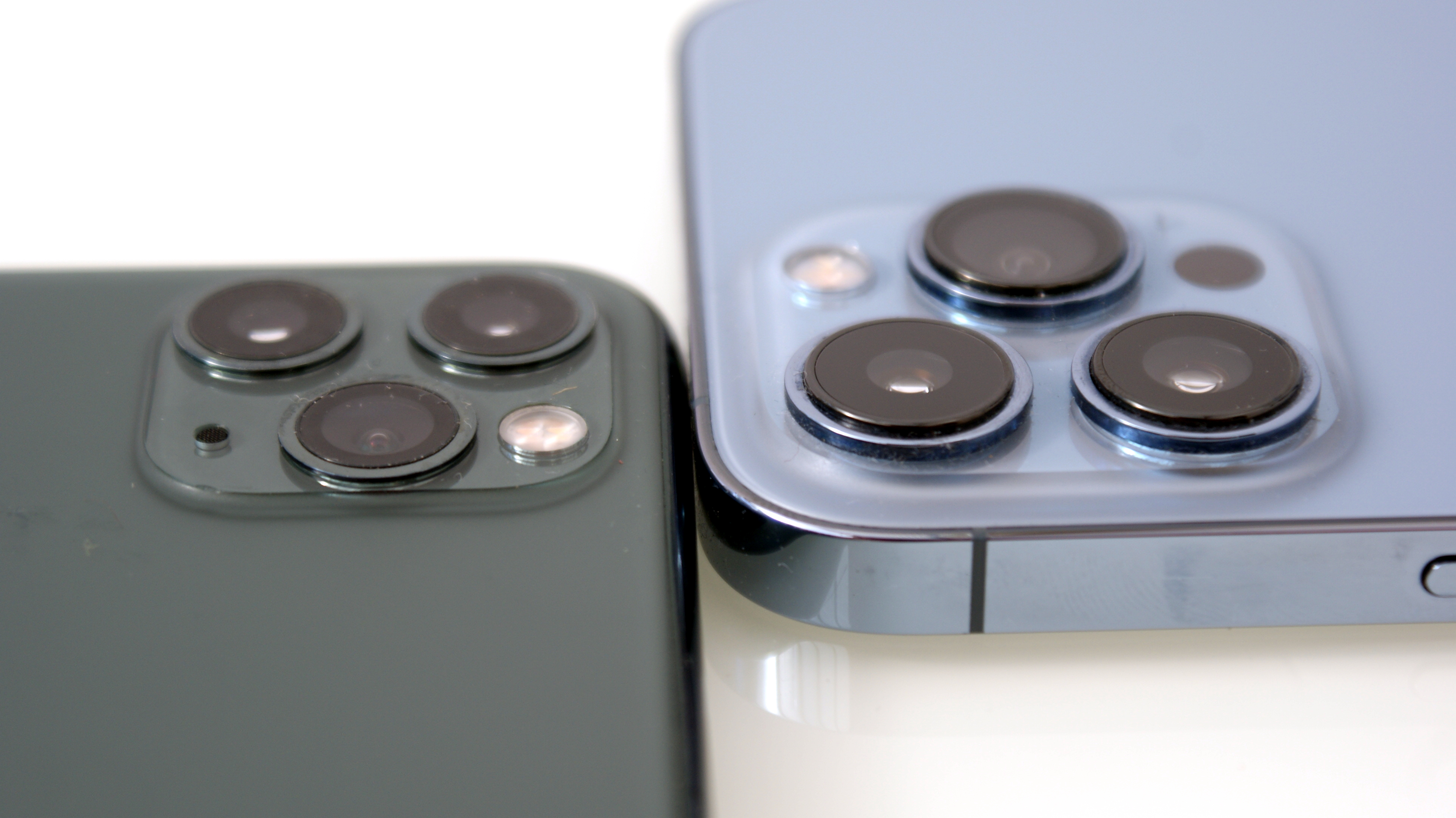
What’s interesting is that it appears to be in the processing of images that the improvements have been made – in some shots the subject was clearer and brighter where a strong backlight was present (which is tricky to manage on a smartphone camera), while in others it was clear that the 13 Pro Max had decided to darken the photo in order to preserve more detail.
This is useful to prevent overexposure, and leads to more attractive shots overall – although the improvements aren’t huge over the 12 Pro Max, or even the 11 Pro Max, they’re noticeable and welcome.
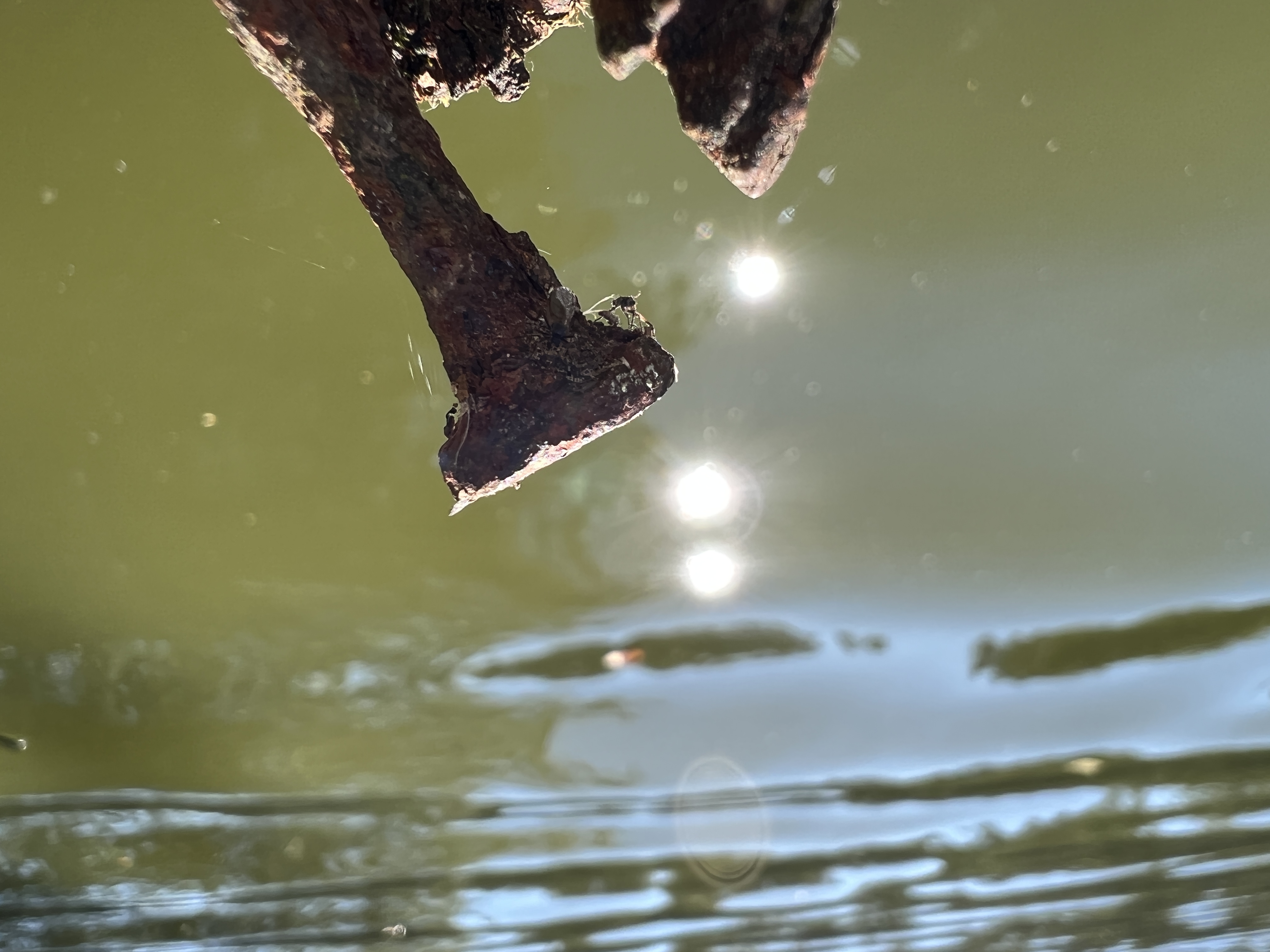

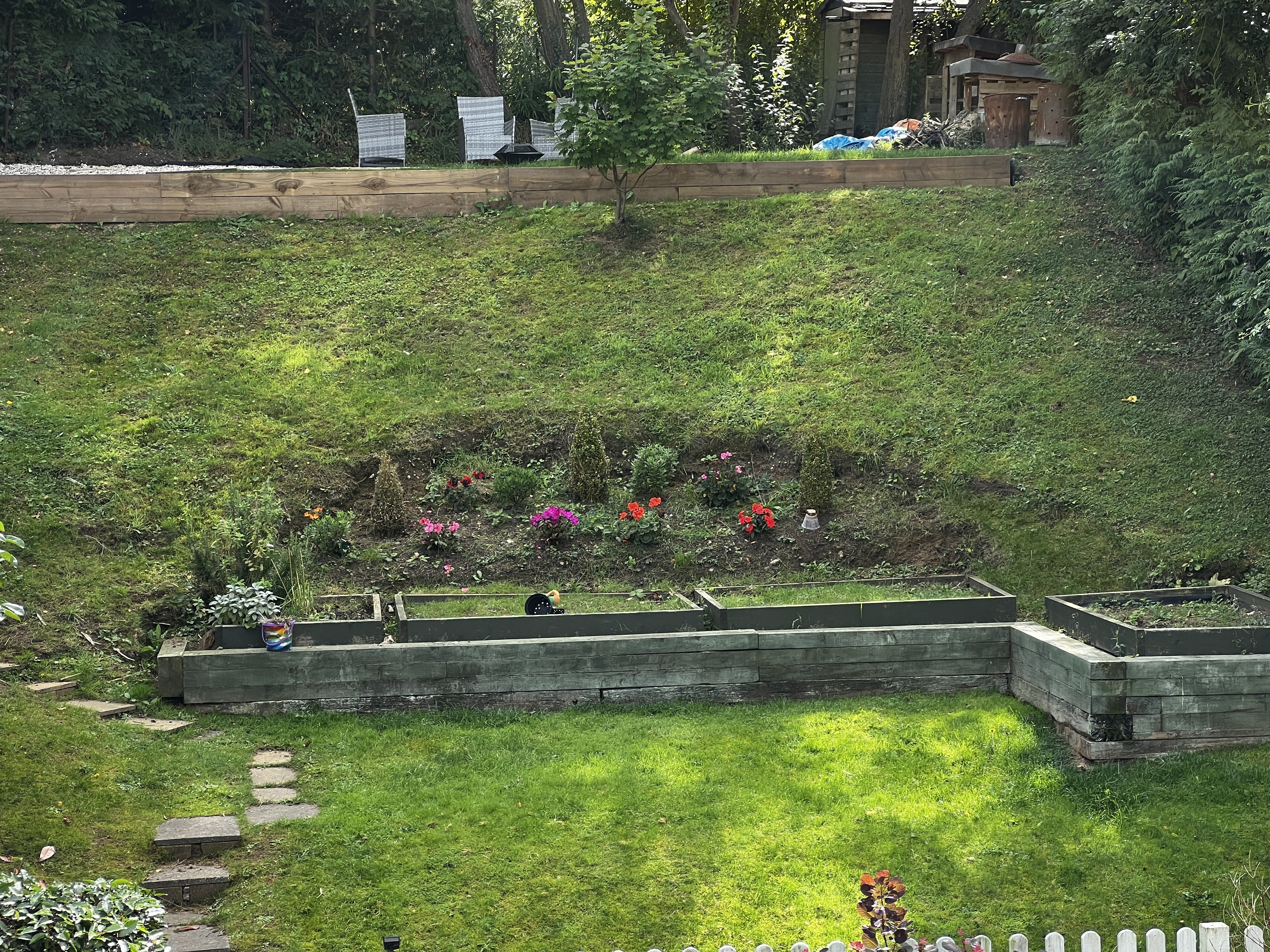
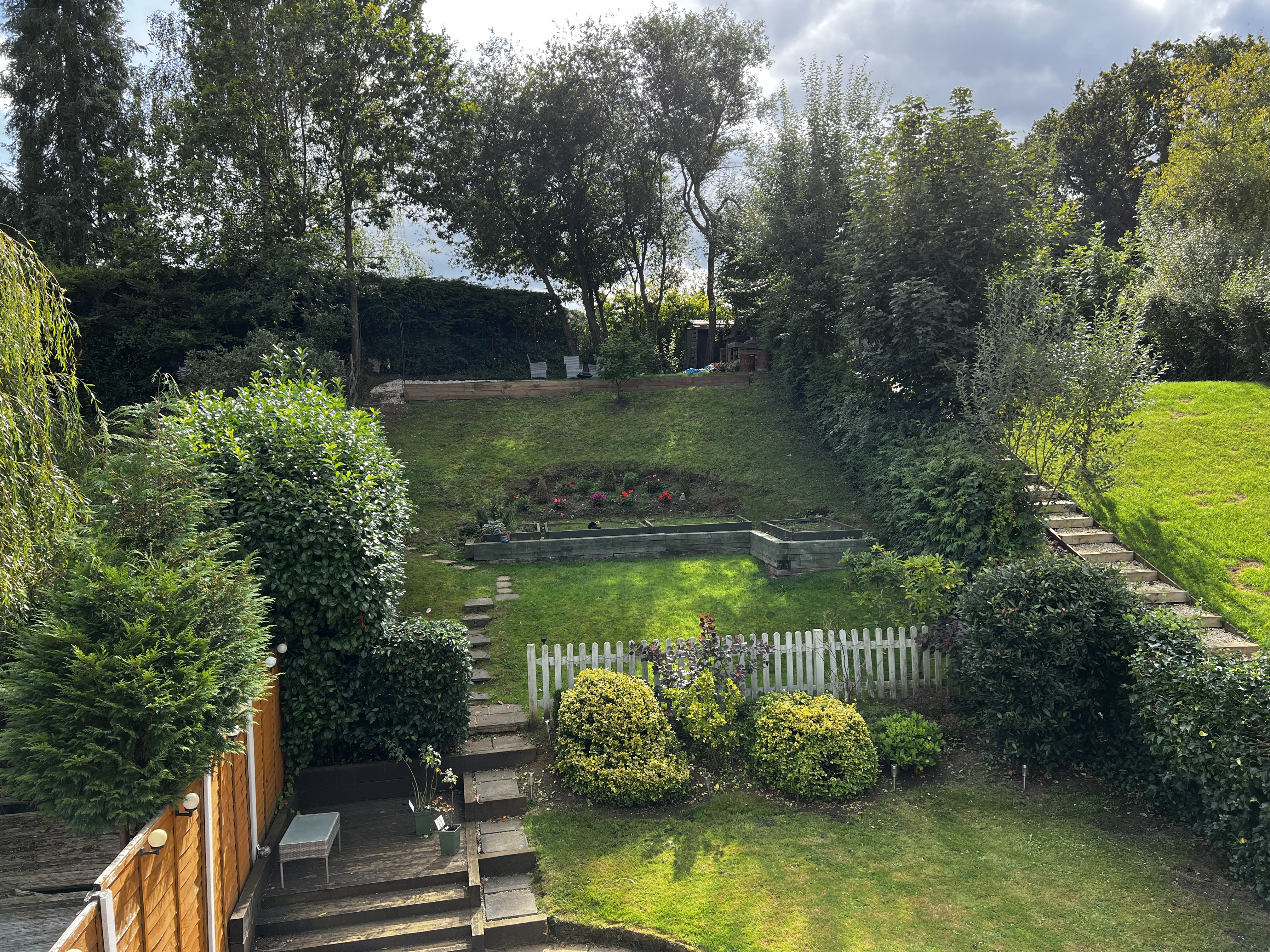
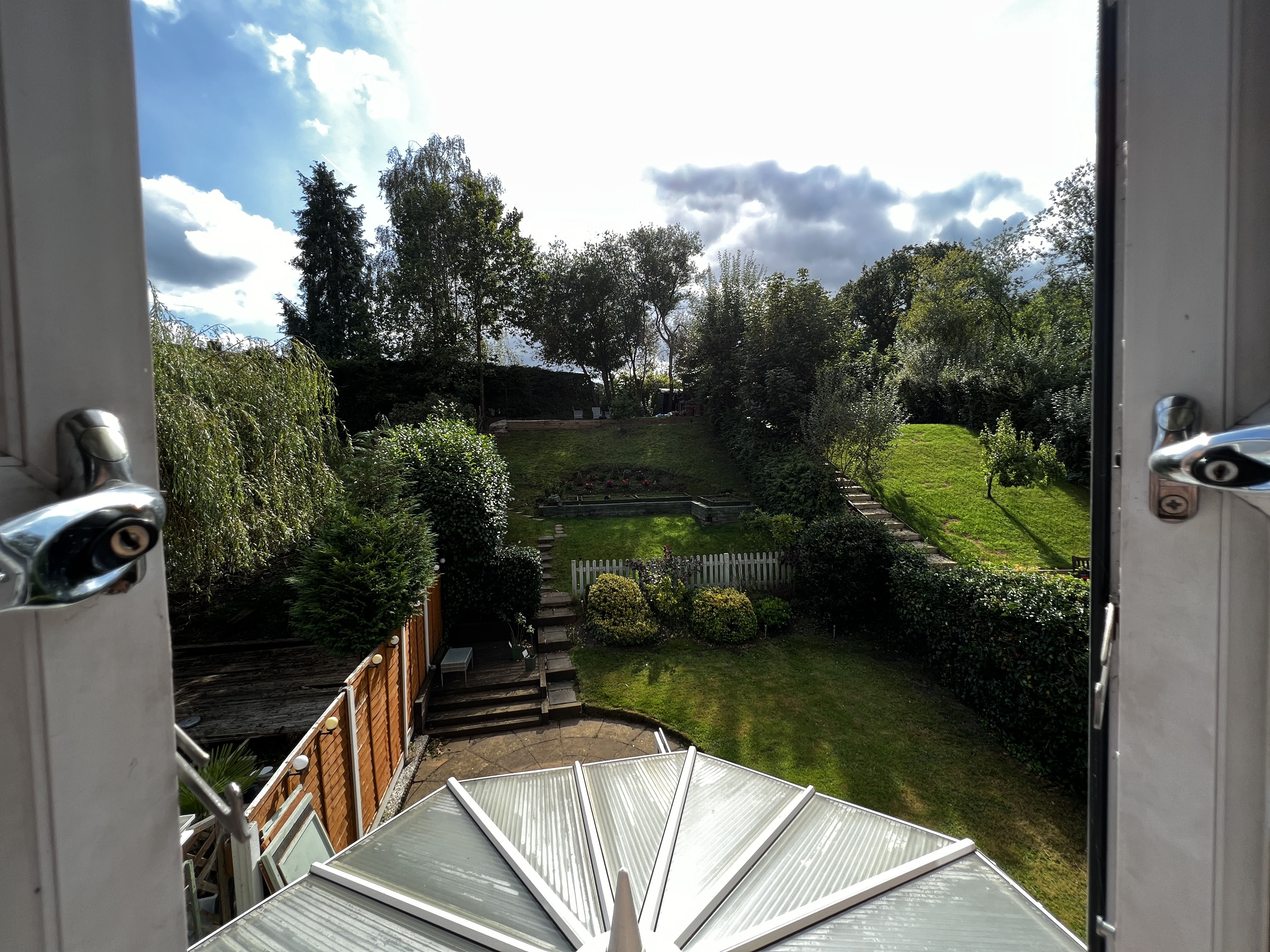
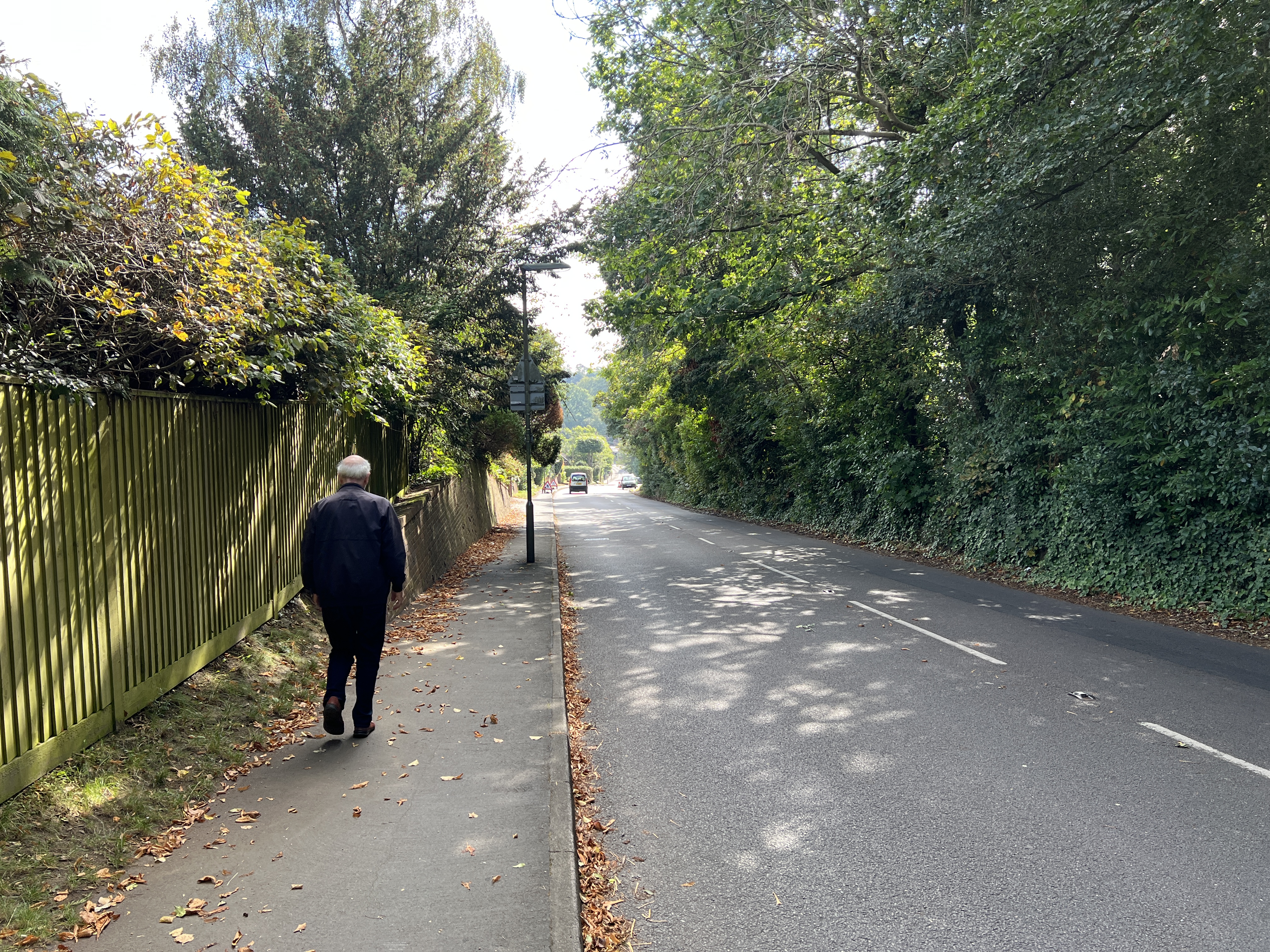
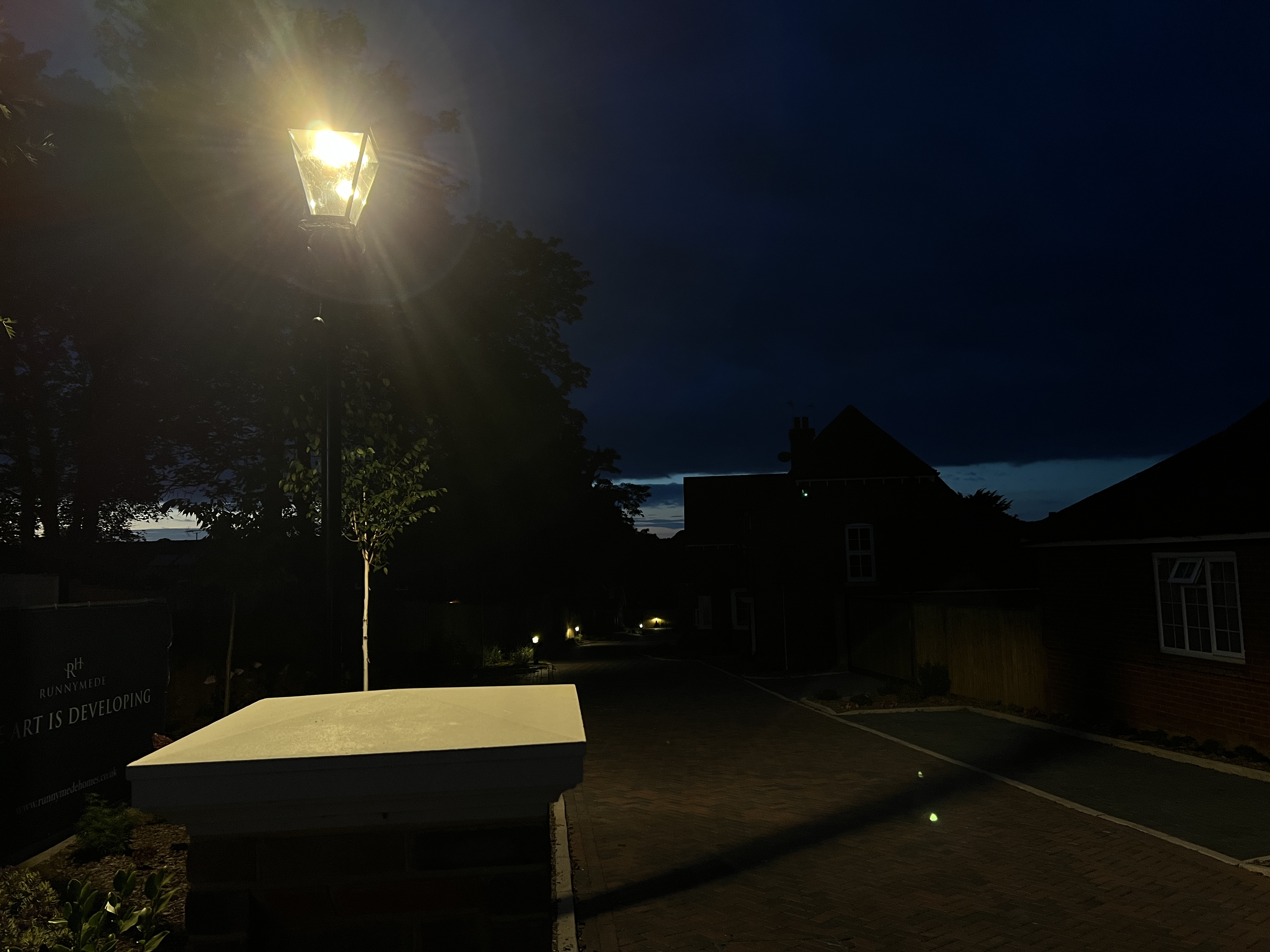


Macrophotography
One of the key changes to the iPhone 13 Pro Max camera setup comes in the shape of the new macrophotography mode, which activates instantly when you move the phone closer to a subject. It’s quite a jarring jump, but suddenly a world of blur becomes clear, and you can take some fantastic pictures.
In fact, it’s only the shadow of the phone falling on some subjects, due to the camera being so close, that causes any issue with the photos – we took some stunning snaps, and we can see the macro mode being something we play with for hours, as all kinds of subjects can look fascinatingly different when viewed ultra-close.
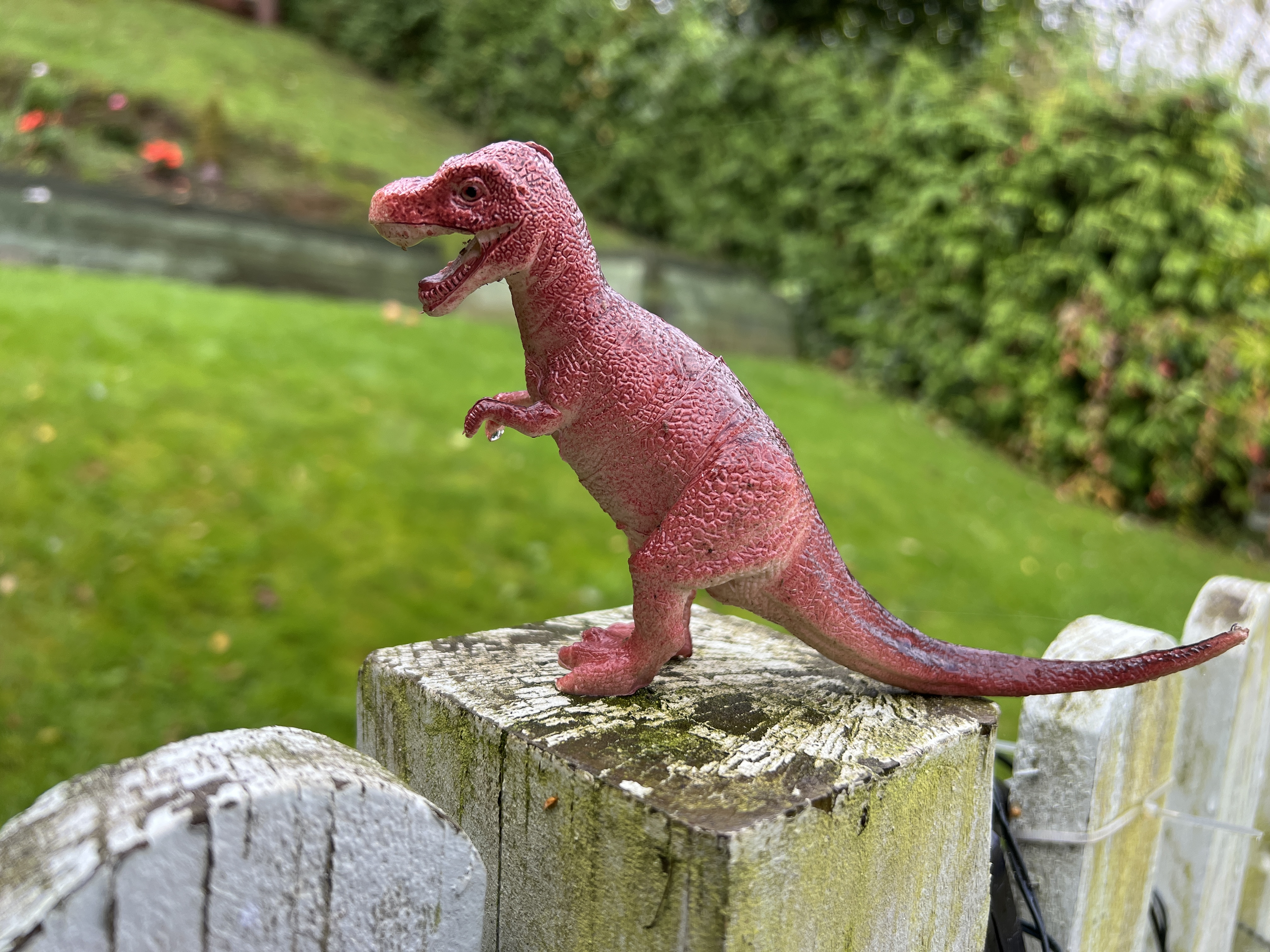




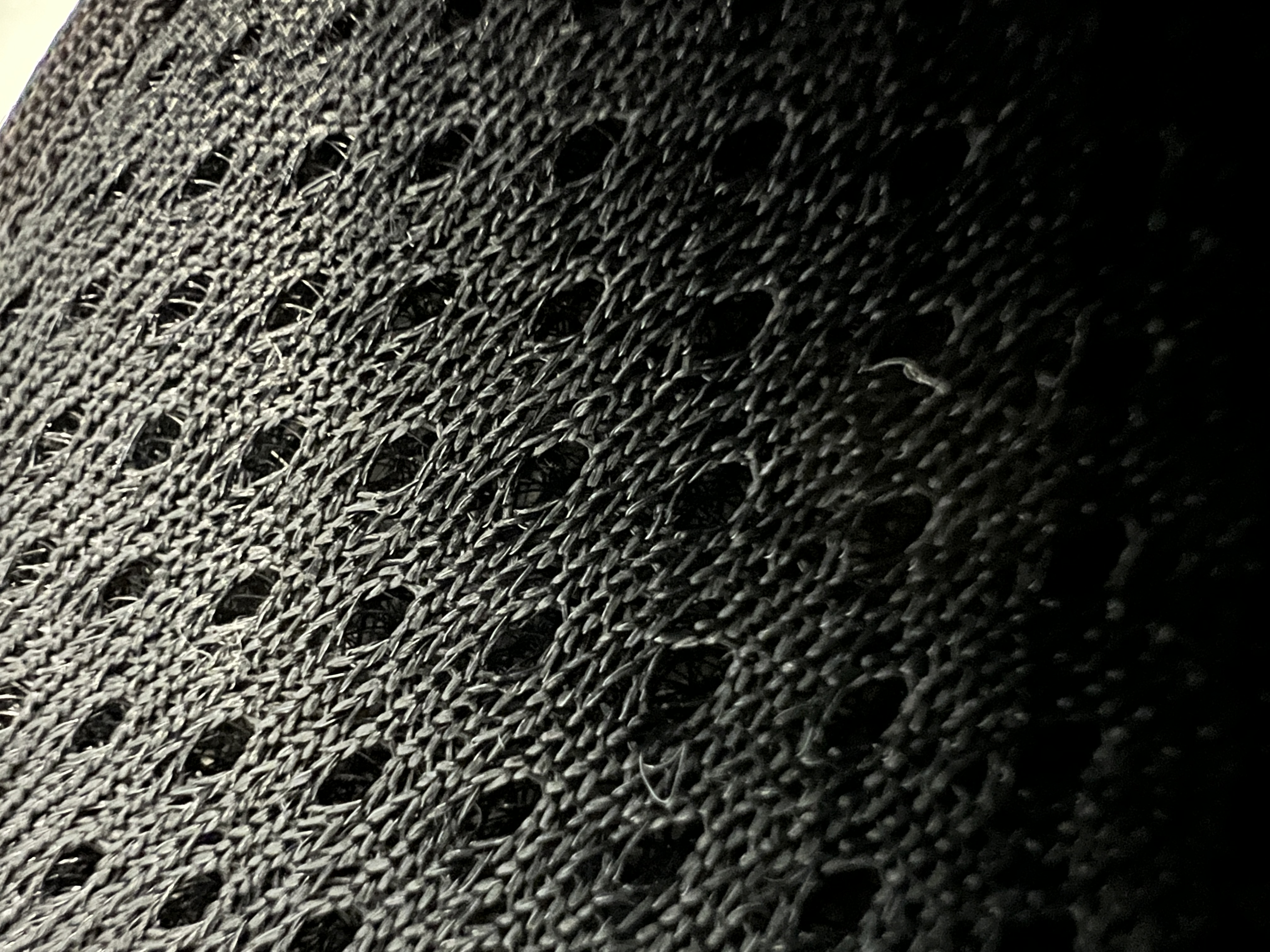
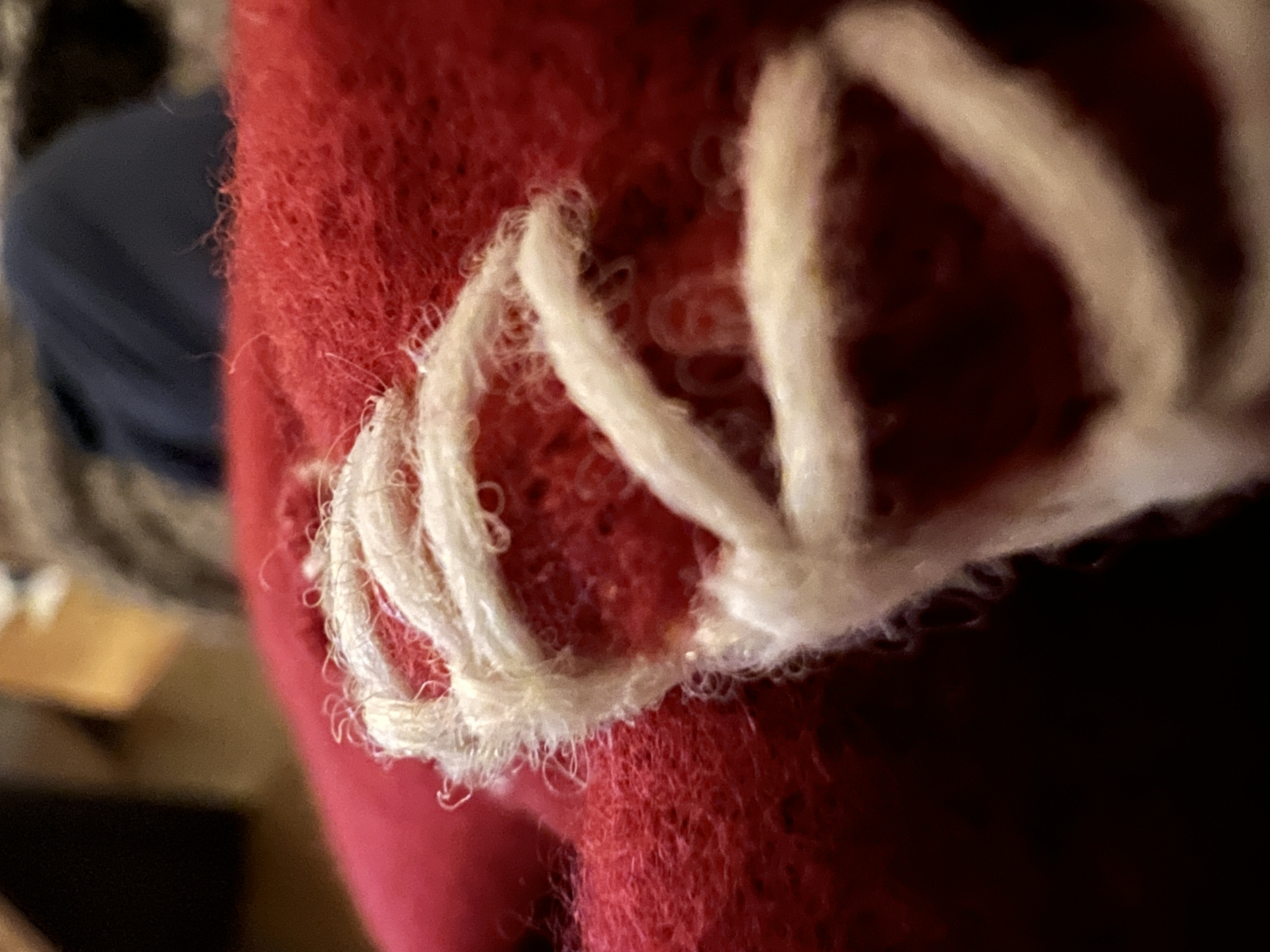
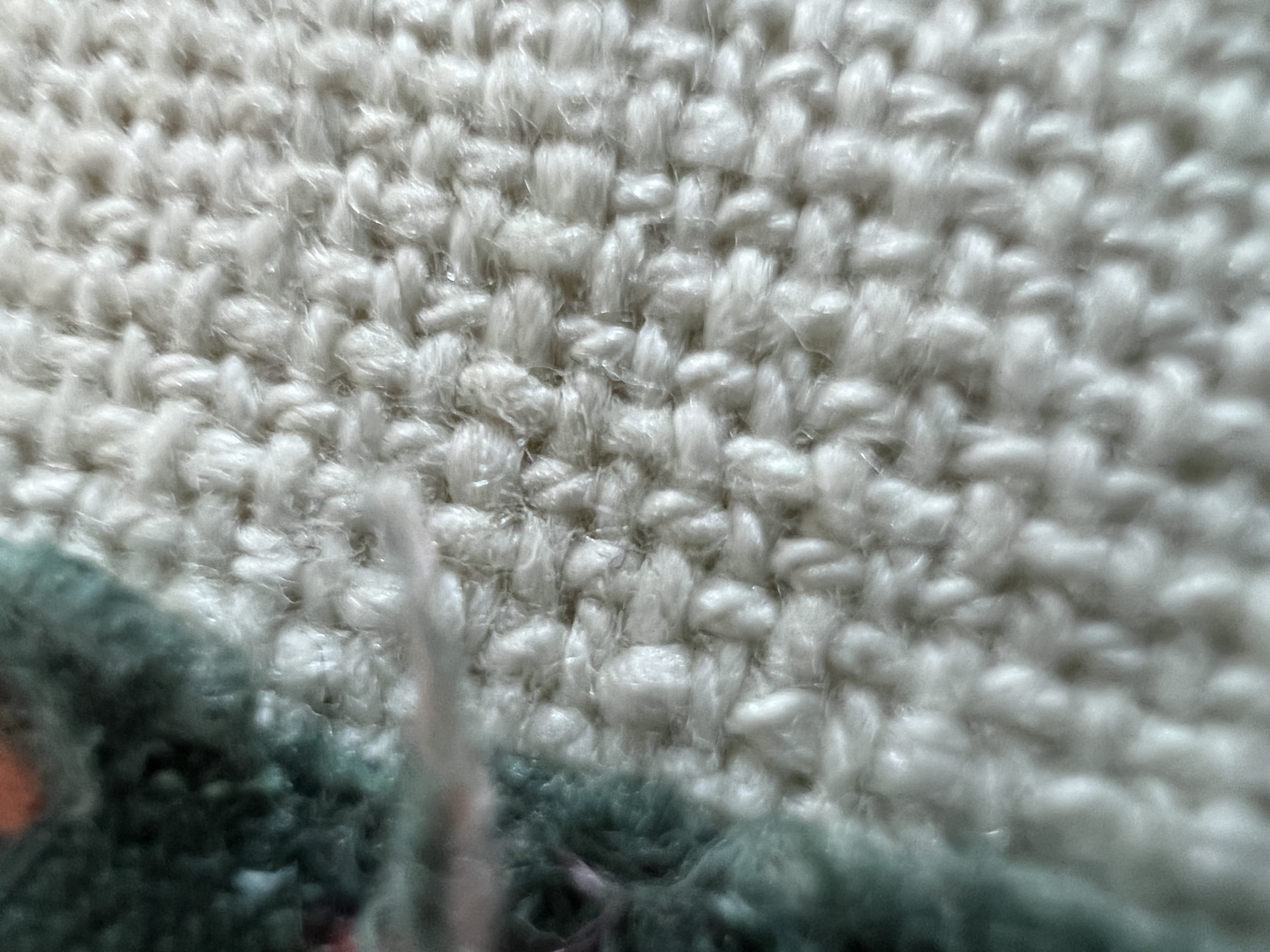
Low-light and Night Mode
Apple has improved all three rear camera sensors for the iPhone 13 Pro Max to make them more effective in low light, and the results are pretty spectacular in a number of ways.
The first is that, generally, low-light shots (not using the long-exposure, hold-still method of Night Mode) look far brighter. Everything we shot looked clear, sharp and bright, and while there was a fair amount of grain in images we definitely got the best low-light photos we’ve seen from any iPhone.
This is partly to do with the new sensor, but also the use of the LiDAR function (which uses lasers to spot where surfaces are) as well as excellent stabilization on board - these mean that the autofocus was superb and sometimes yielded photos that looked brighter than the subject did in real life without losing definition to keep the shutter open for longer.
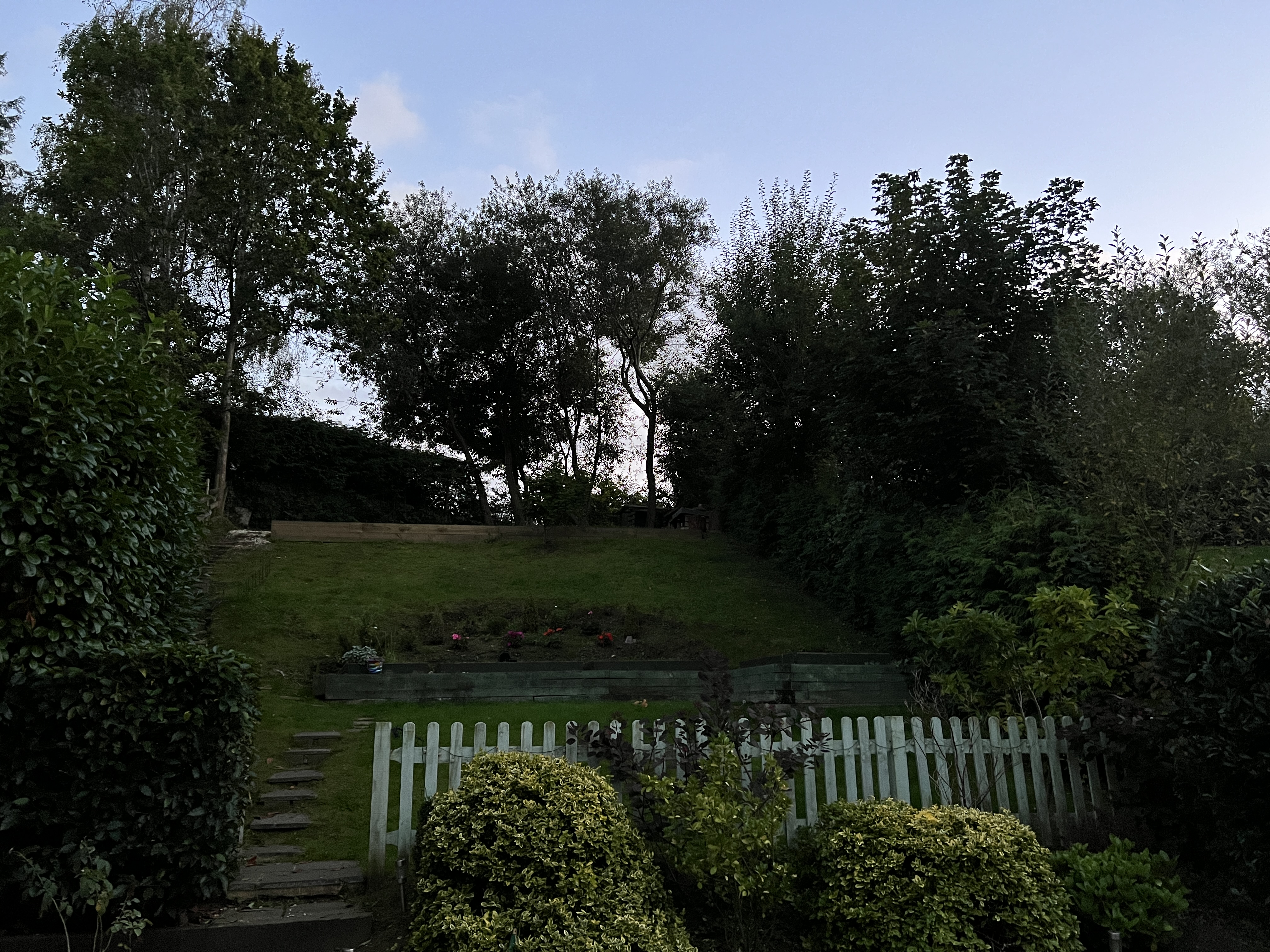
One interesting quirk of the multi-lens setup of the new phone: in low light, the iPhone 13 Pro Max once again, when using the telephoto lens and instead of using the optical sensor, defaults to the main wide camera and crops in digitally.
It’s not a huge issue, as the picture quality still gets processed to a decent level, but it’s annoying that it’s not highlighted in the process, and Apple has been doing this for years now.
The other enhancement the new, more sensitive sensor has brought with it is that Night Mode doesn’t activate as often. While the results from Night Mode can be incredible (see the samples below) it’s annoying to have to hold the phone steady for a second or two when you just want to take a quick snap in the evening, and the new sensor often negates the need for that.
Photographic Styles
We were surprised when Apple came out with Photographic Styles as a Big New Feature (™) on the iPhone 13 range – while there are five pre-programmed settings (standard, rich contrast, vibrant, warm and cool) to make the image more vibrant or alter the color temperature, we didn’t see how this was really different from a filter.
But what’s actually happening here is that the color and contrast of the photo are being altered when you take it, rather than an effect being applied post-capture, and which you can undo.





This means you can choose to shoot in richer contrast every time if that’s your style, or take a set of photos that are a little less warm if that’s what the project calls for.
It’s more akin to the photo style options on DSLRs and mirrorless cameras than an Instagram filter, and, while we didn’t really use it that much, it does add another interesting new layer of functionality.
Cinematic Mode
Apple’s other new feature is Cinematic Mode, where the ‘rack focus’ (as in, which part of the shot in a movie is in focus) will change automatically depending on where the focus of the viewer should be.
This means that if the protagonist in your movie looks at someone else and stops speaking, the focus will shift to them and blur out the original speaker- it certainly looks dynamic and more movie-like. You can even alter the focus after the movie has been taken in the on-phone editing suite, if someone speaking doesn’t quite look as sharp as you want.
You might assume that this is a mode designed for professionals so that they don’t have to worry about rack focus when shooting movies, but given that it’s also appearing on the regular iPhone 13 and 13 mini, as well as the 13 Pro, it’s clear that this isn’t exclusively a pro feature, and something the everyday user can play with.
While it’s a fun tool, it seems odd that Apple’s made such a big deal of this. Yes, we can see that it will yield some cool videos if you want to film your friends talking about something or everyone having fun at a party, but that’s quite rare for home footage.
It feels more like you’d need to remember to use Cinematic Mode when the conditions are just right, where the focus of your movie is constantly shifting – and we’re not sure how often most people will make ‘proper’ movies’ at home, rather than just capturing a video of their dog doing a backflip for a treat or similar.
Portrait mode
Another enhancement Apple has made is, once again, refining the background-blurring Portrait mode on both the front and back cameras.
The forward-facing TrueDepth camera can take some truly stunning selfies (well, subject dependent, of course…) and the blurred-background pictures you can get with the rear-facing camera was something we enjoyed playing with, getting some impressive shots.
It’s the foundational elements of the Portrait-mode shots that have been upgraded: the lighting is more natural, the lighting is more natural, and the depth-of-field or ‘bokeh’ effects have been improved so that the things that should be in focus are in focus – the edges of someone’s head for example (and even their stray hairs).

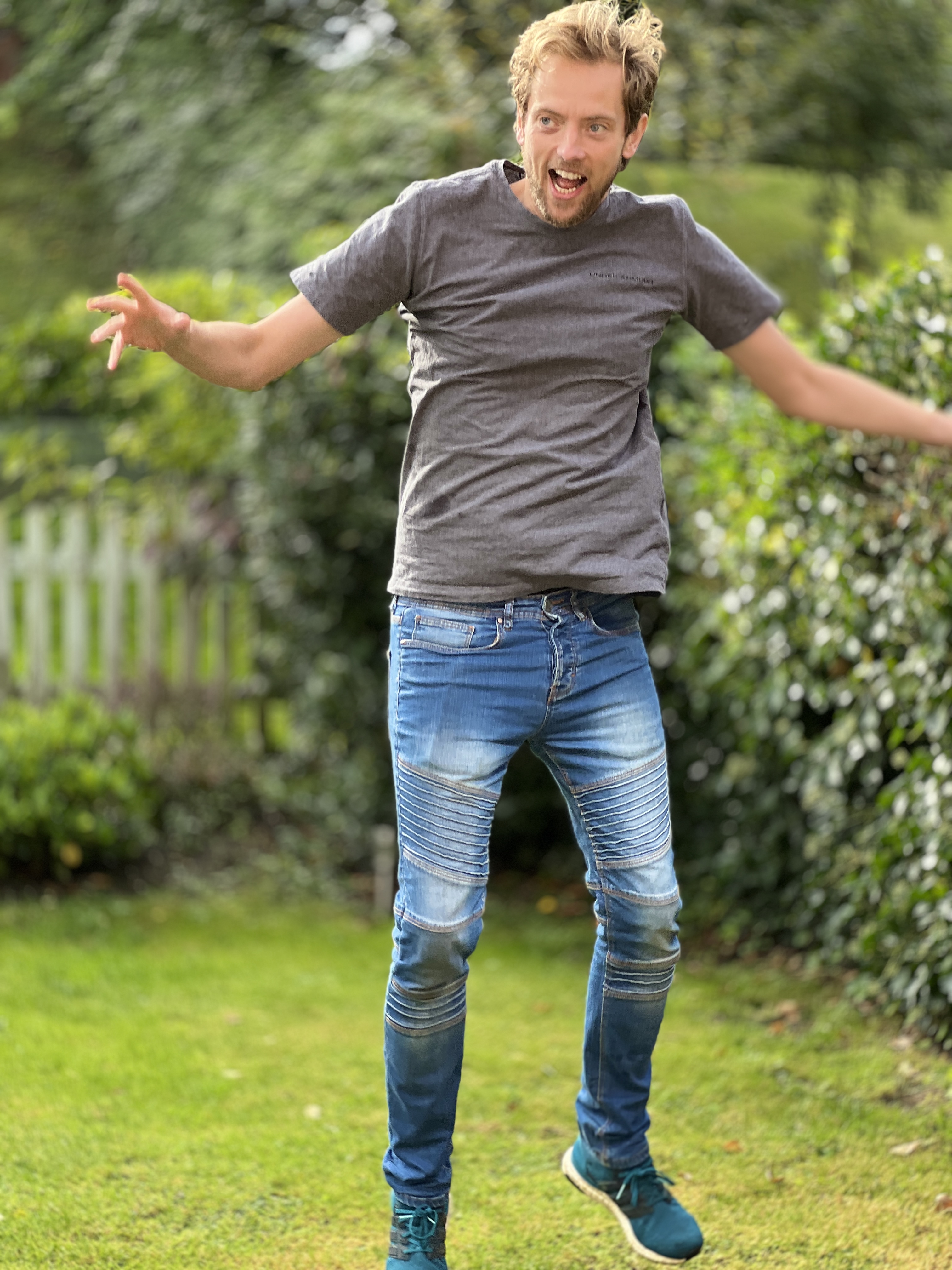

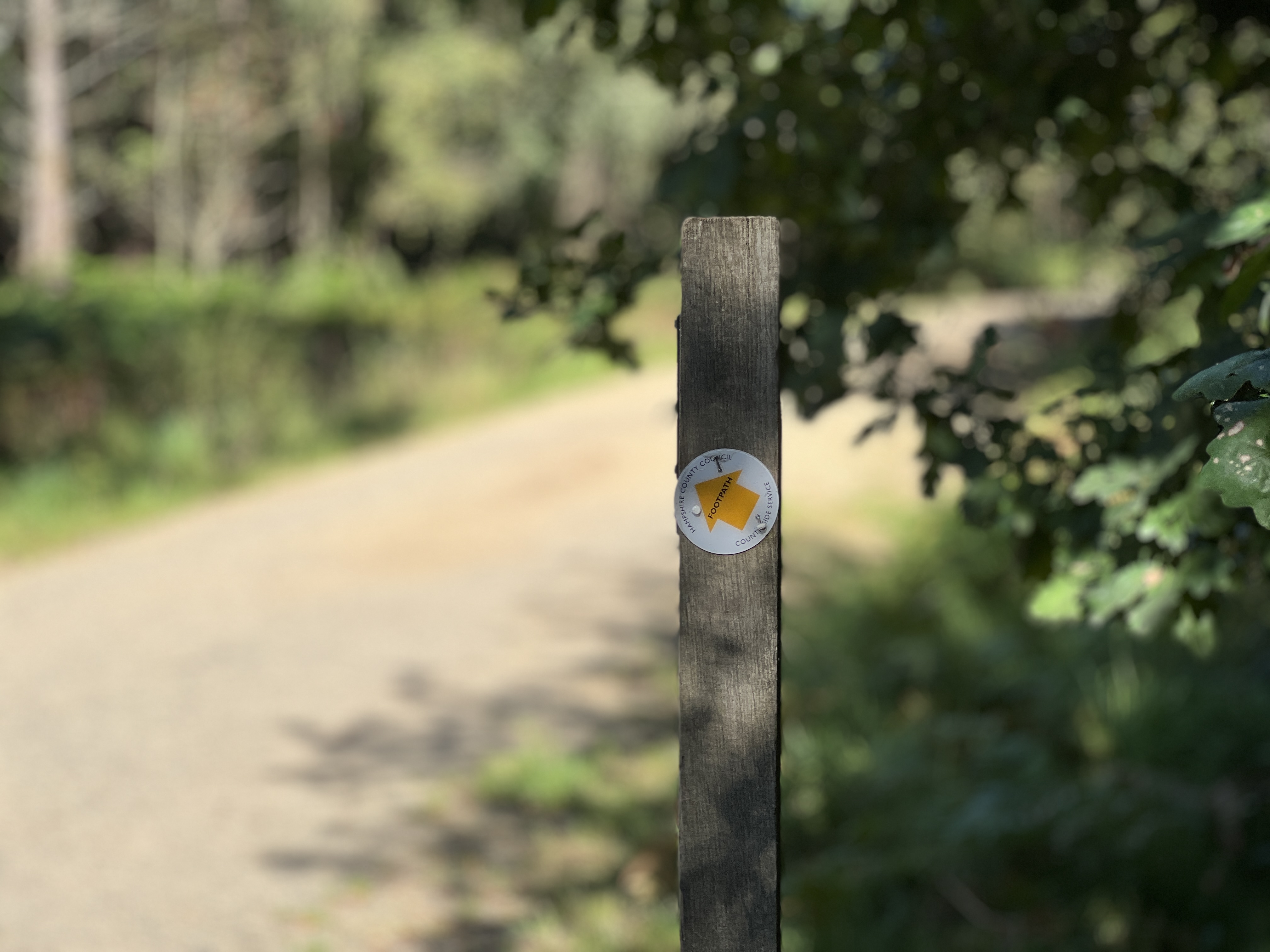
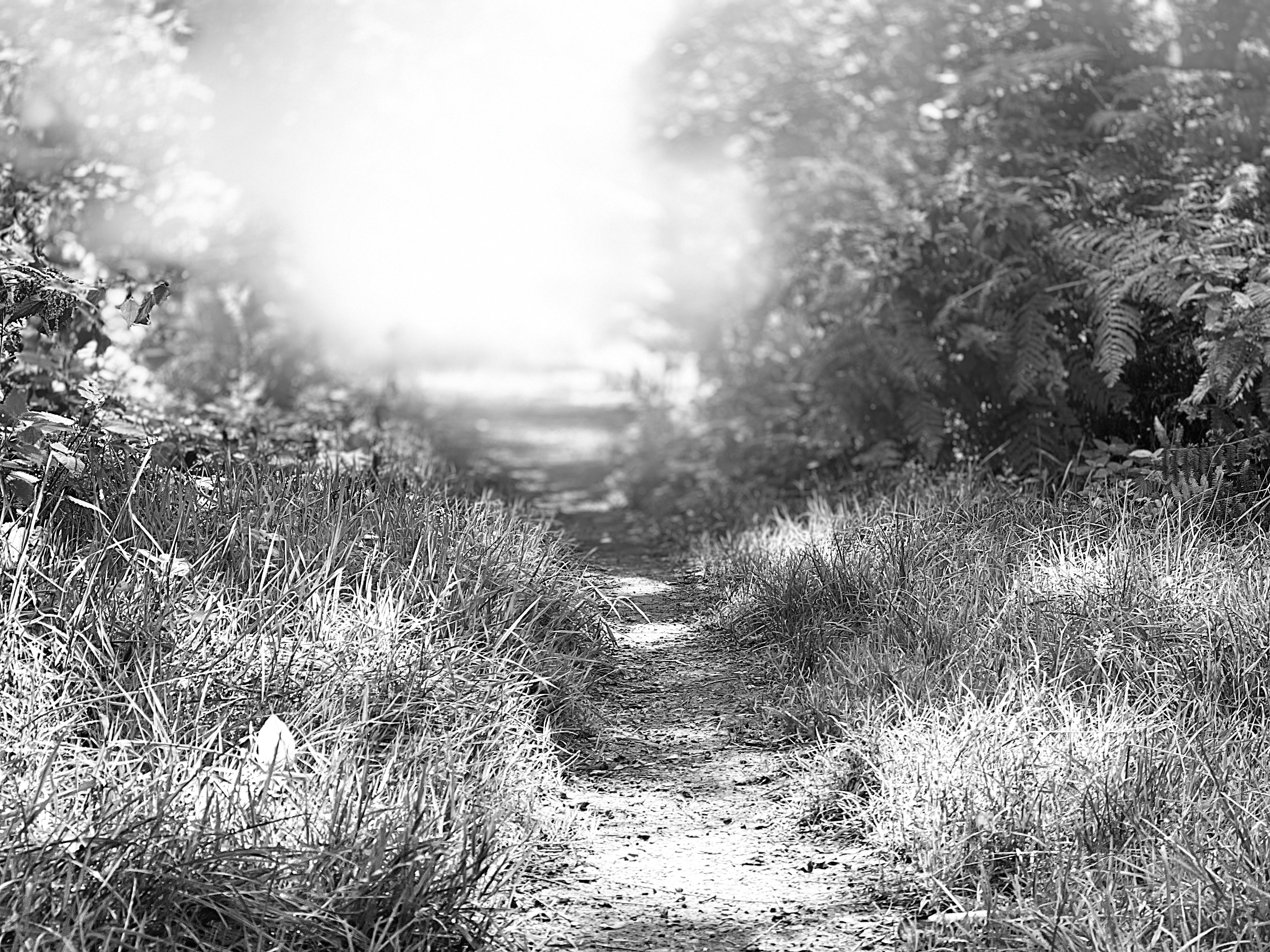
You can even use Portrait mode to capture stationary objects that aren’t human or animal - being able to a heavy depth of field to a trail or forest leads to some lovely pictures when you’re out and about.
We’re a bit sad that Portrait mode only works in 1x or 3x zoom though – on the 11 Pro Max, 2x zoom was the perfect length to capture a subject, and we found that we constantly had to move the camera forward and back to get the right image with the 13 Pro Max. The 12 Pro Max increased this to 2.5x zoom, but now we’ve gone even further.
ProRAW
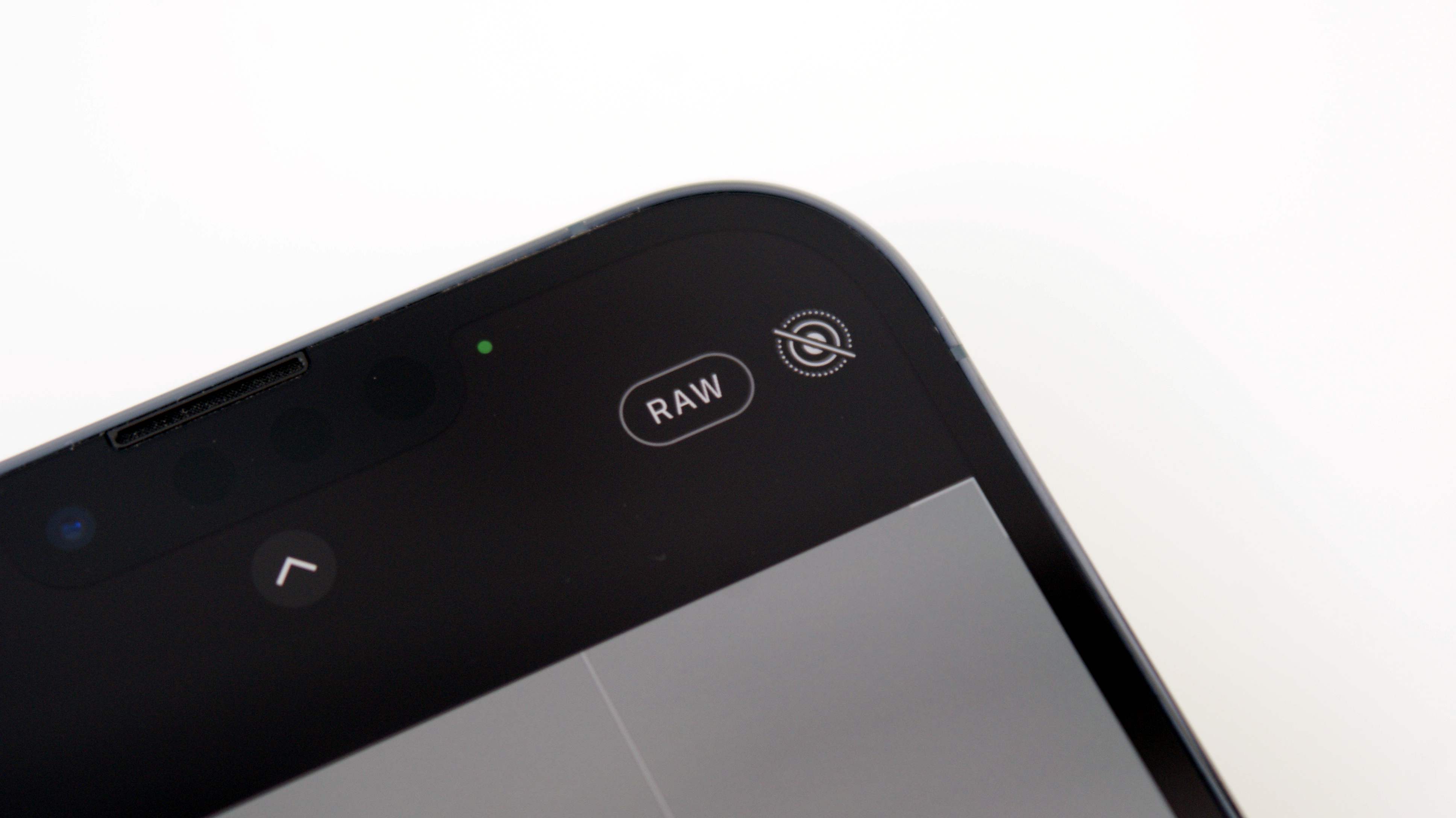
ProRAW is back again on the iPhone 13 Pro Max (and it’s now available on the iPhone 13 Pro too) – and it’s a bit of a gateway drug to ‘proper’ photography.
A quick overview: most phones shoot in the JPEG format, with images processed in-camera to tweak things like color and contrast, and do a jolly good job of it; however, the images are also compressed, and much of the image data discarded, which leaves you with less latitude to edit your shots later.
Most modern cameras also enable you to shoot in raw mode, which captures unprocessed and uncompressed (but very large) image files, giving you plenty of leeway to fine-tune the exposure, color, contrast and more in post-processing.
ProRAW gives you the best of both formats, allowing the user to get an enhanced and ready-to-go snap using the smarts of Apple’s A15 image processor, but retaining all the information to allow you to edit the photo afterwards if you want – this is easily doable in a program such as LightRoom, and we really enjoyed playing with the ability to raise or drop shadows and get some really cool extra effects by altering the exposure and sharpness, thanks to having more image data to play with..

Now this really is the kind of thing that we’d expect from a ‘Pro’ handset, and it’s a feature that’s really fun to explore and play with.
Speaking of pro modes that videographers will want to use, there’s also ProRes support here, which is a high-quality, lossy video compression format that Apple created to let creative types manage video up to 8K, and which is used regularly throughout the industry now.
The inclusion of support for this format on an iPhone is going to be useful to those who want to shoot commercials or high-end video and send off the edited results from the field – that’s not something that most of us will do regularly, but such additions show that Apple wants to make it clear that the iPhone 13 Pro range is a step above the ‘basic’ models.
iOS 15 and supreme power
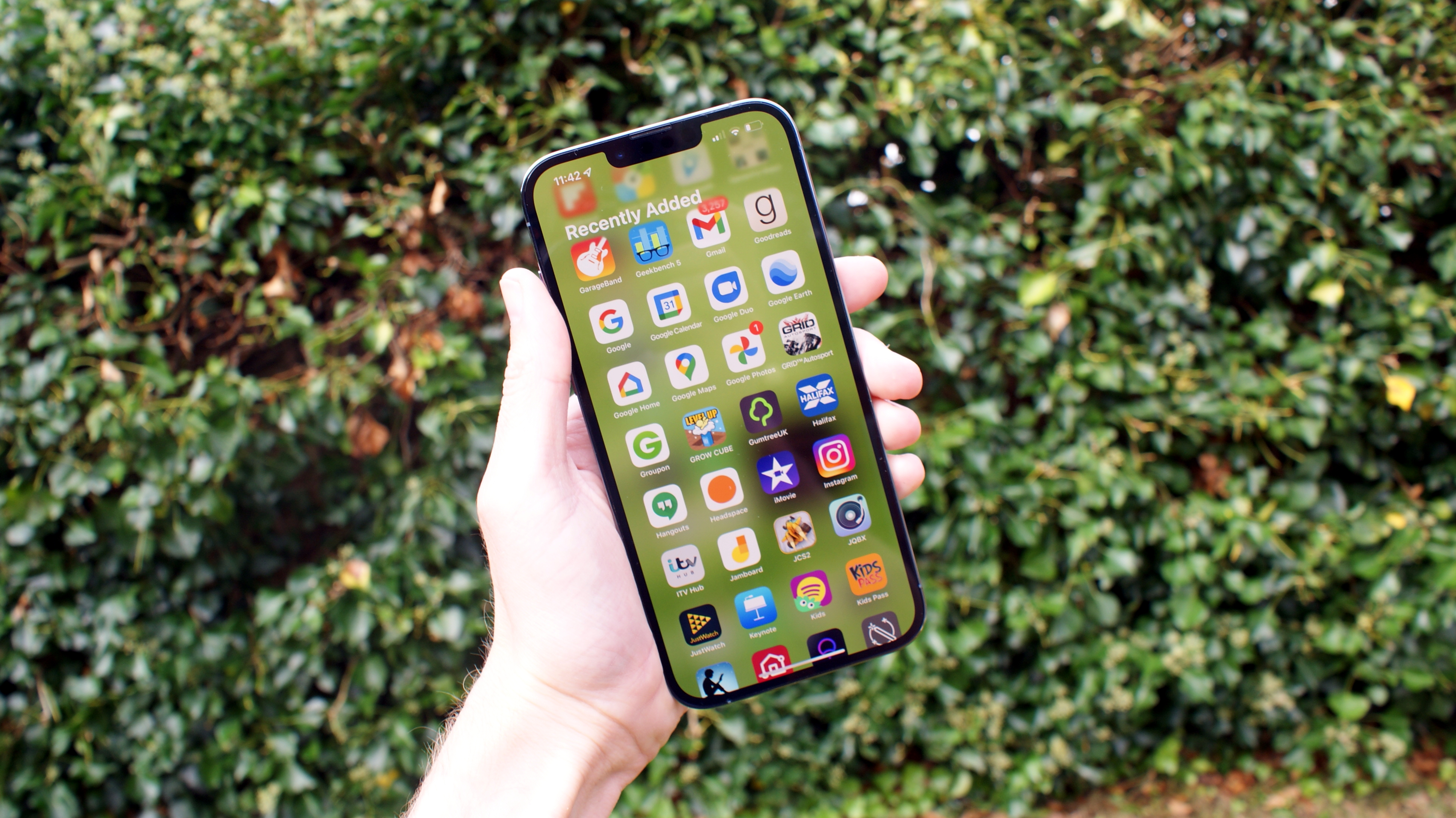
Apple is making some bold claims about the iPhone 13 Pro Max, selling it as one of the most powerful smartphones out there right now – and the claims seem pretty justified based on our testing.
While the numbers that we saw in our benchmarking absolutely back Apple up (and we'll get onto that in a minute), the real-world performance is what matters. The 'issue' is that smartphones are already more than powerful enough to handle most things you want to throw at them, and the fact the 13 Pro Max is lightning-fast at switching between apps is no surprising thing.
When it comes to raw figures the results speak for themselves: this phone is twice as fast (nearly) at transcoding Adobe video from 4K to 1080p) as the 11 Pro Max, and a second faster than the 12 Pro Max from last year. Apple's claims that the new A15 chipset is powering things along more efficiently than ever before really do stack up.
But we were surprised to see that some high-power games, like Grid Autosport, didn't load that much faster – the game’s high levels of detail and graphical fidelity mean it’s going to take a few seconds to load on any device, but we expected it to be a lot quicker on the iPhone 13 Pro Max compared to a phone from two years ago.
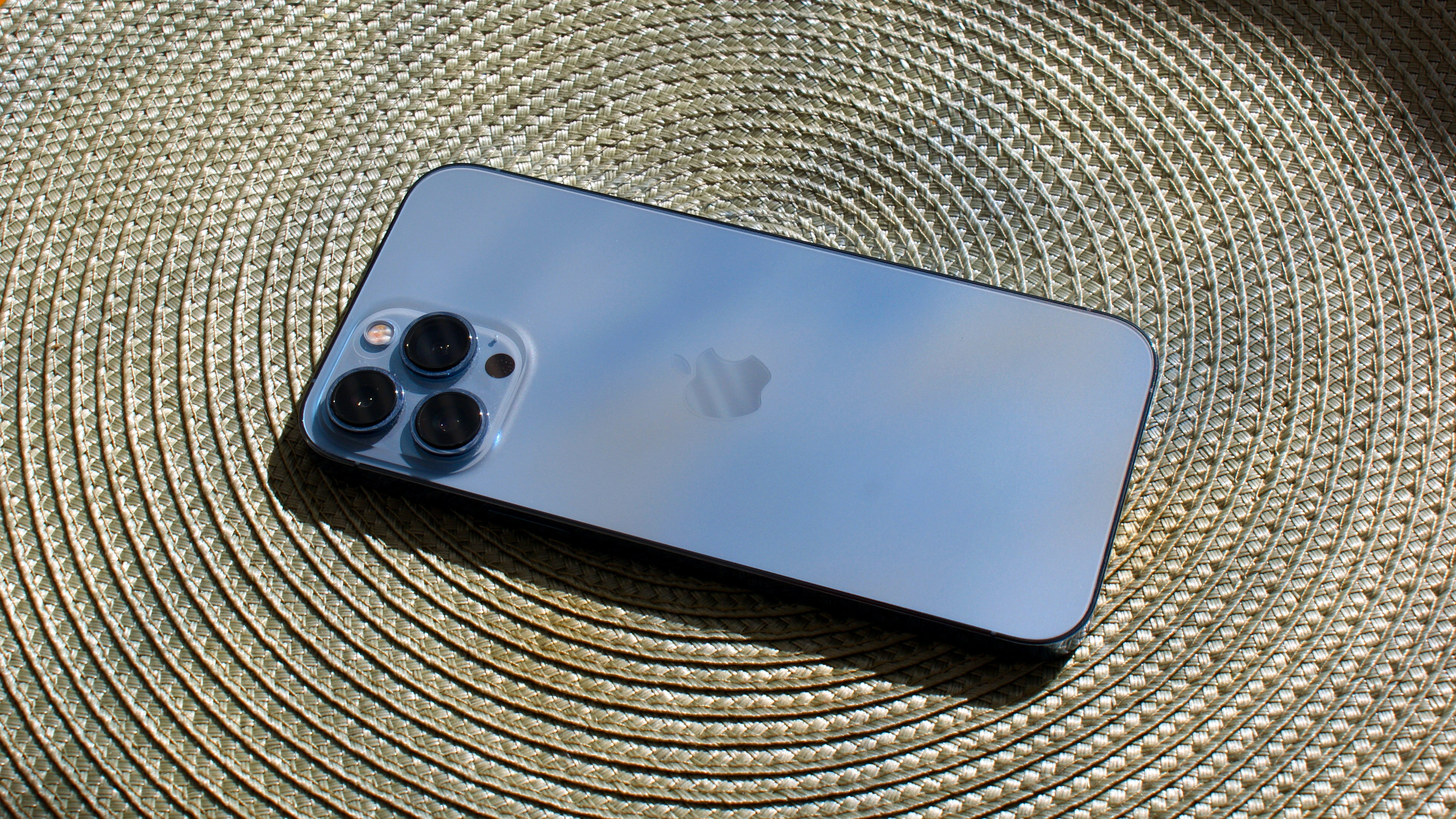
That's splitting hairs somewhat though, as there's no doubt that when it comes to things like editing photos, saving video and performing the heavy tasks the iPhone 13 Pro Max is more than adept. In fact, it's only bettered by the iPad Pro range in our testing – which is a far more expensive device, and arguably more likely to be picked up by those looking for a high-power device.
Let's quickly look at those benchmarks: the iPhone 13 Pro Max scored far better in terms of framerate, multi-core capability and speed of video transcoding when compared to the Samsung Galaxy S21 Ultra – almost twice as fast in some cases.
However, keeping in mind what we said above about real-world use, we wouldn't read too much into that performance, as both phones operate sublimely well; but if you're a creative looking for a phone that can help you record high-quality video or work on high-power tasks, this is your phone.
The upgraded iOS 15 is coming to most iPhones, so the new capabilities aren't too much to get excited about on the new iPhone 13 Pro Max, as you can get the same tricks on older models.
That said, there are a few improvements that you can look forward to: the new Weather app is hugely enhanced, with more accurate location tracking, improved animations and things that are genuinely useful, like radar maps to show heat and rainfall patterns.
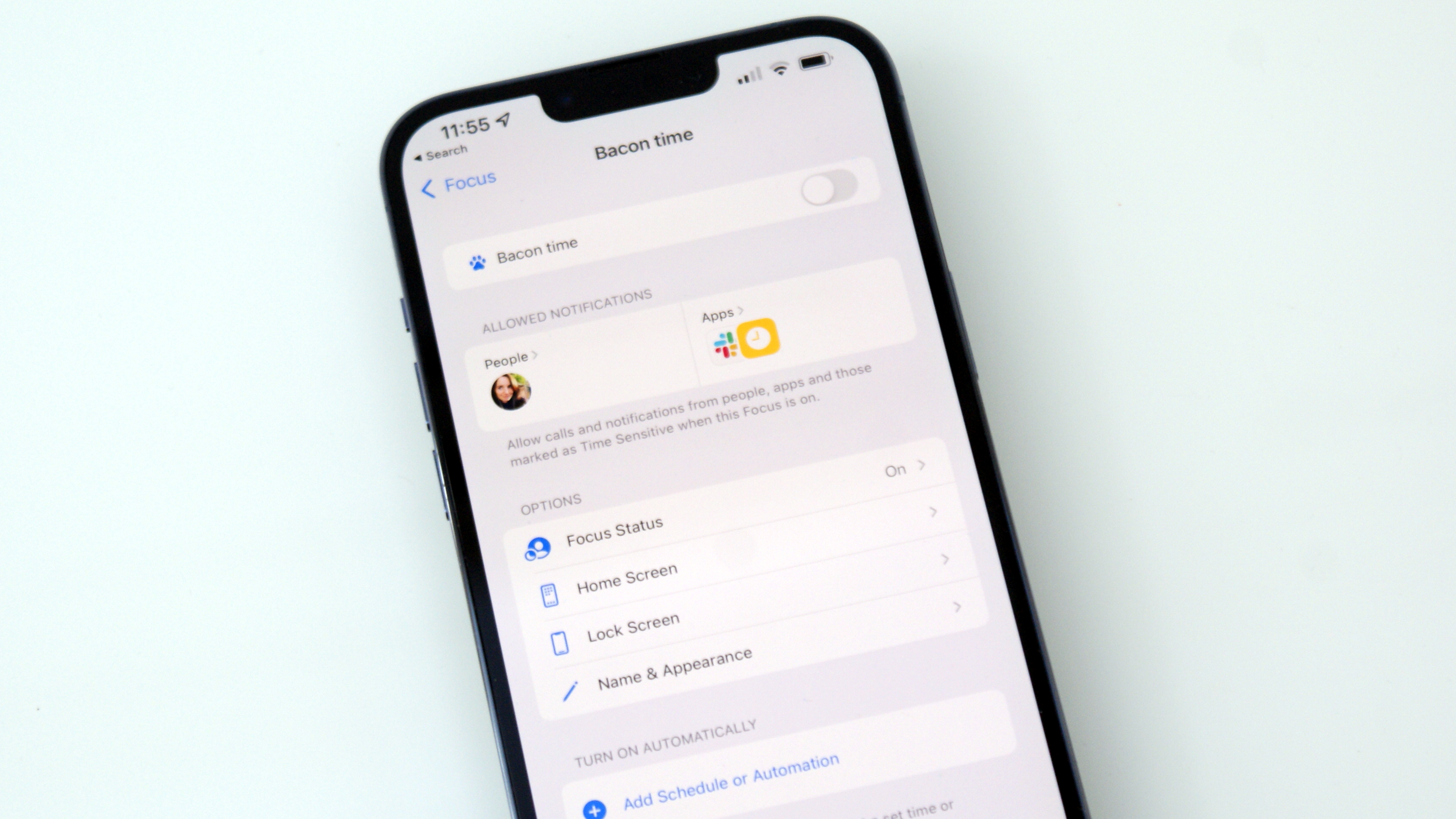
Apple is making a big deal about Focus Mode, which allows you to turn off certain distractions when you need them. This feels like a powerful tool, but in our testing we didn't really get much from it. Perhaps it's something that needs to be perfected over a few months, allowing you to work out who you want to hear from and in what scenarios, but we found we kept cancelling the settings.
Perhaps we just need more discipline here - but it would be nice to see a few more default modes, or more in-depth tutorials to see how useful this can be.

Another change that's worth noting is to notifications – it's great to be able to lump together non-time-sensitive updates, and only see them each morning and afternoon. We instantly found we didn't care about most of them, and just switched them off in the menu, and having a moment to perform that cleaning was handy.
We do like the new 'Cards' used to show images in Messages too – it's a small change, but they were fun to scroll through.
Should you buy the iPhone 13 Pro Max?
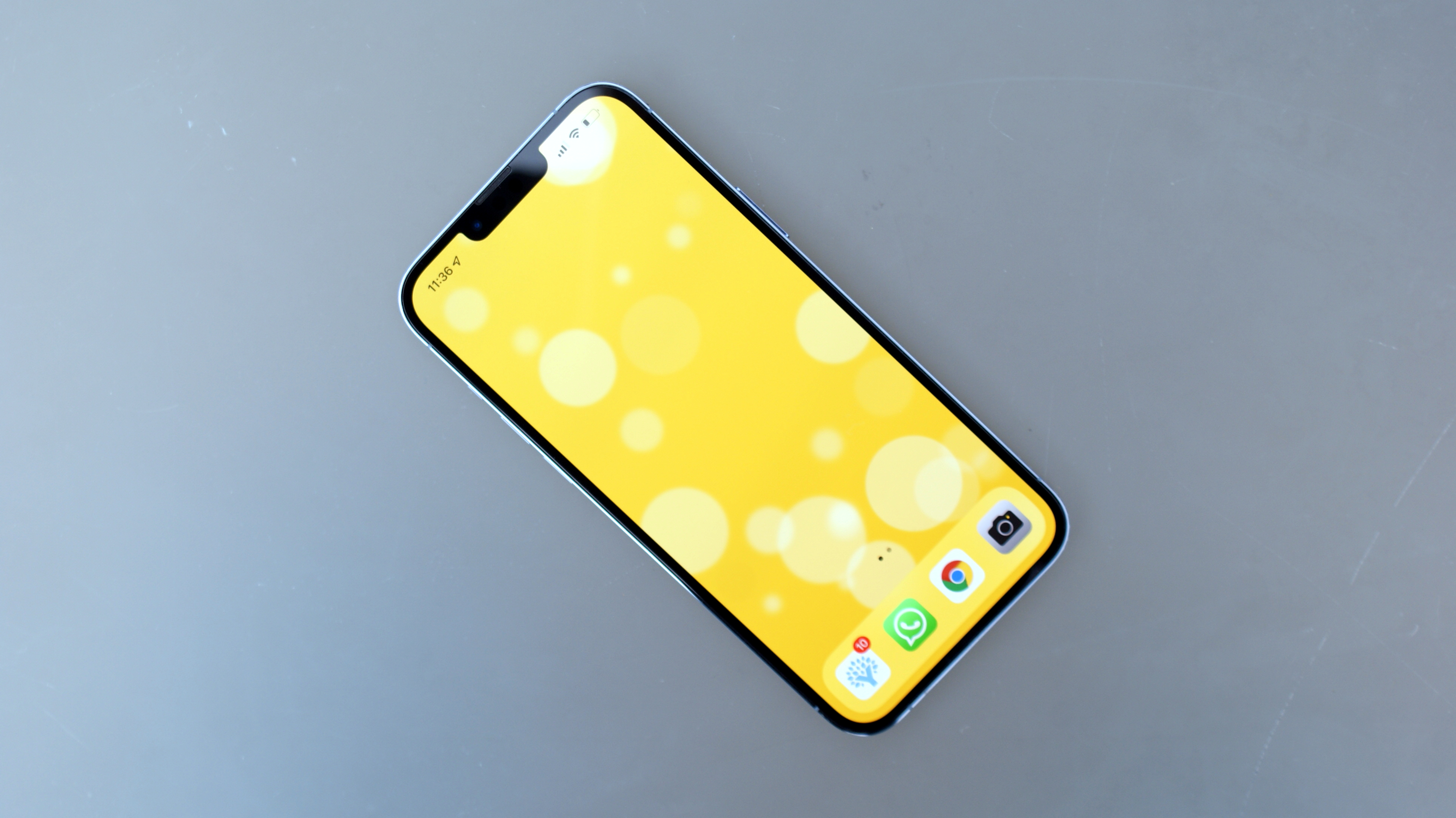
Buy it if...
You want an iPhone with great battery life
Simply put, Apple has finally made a smartphone with decent battery life. You can either feel annoyed that it's taken this long – and it’s taken far too long in our opinion – or be pleased that you'll regularly be able to forget to charge your iPhone overnight and not have to worry.
You need the power
The performance of the A15 chipset is pretty incredible – while only a small subset of users will get the full benefit from it, if you're a gamer, or a creative who likes being able to manipulate images or video, this is a fantastic phone.
You want a camera that easily spits out great photos
The iPhone 13 Pro Max is one of the best camera phones in the world, producing clear and vivid images, with impressive auto macro mode, and a simple interface that still offers lots of ways to improve your snaps.
Don't buy it if...
You have small hands
This one may sound obvious, but most people won’t be able to reach a thumb across this display one-handed, and it's quite easy to drop. Don't want an enormous phone? Stay away.
You're on a budget
We might as well copy and paste this each year: you'll need to pay a lot to get the very best iPhone. Thankfully, cheaper and older Apple phones offer a lot of the same functionality by being iOS 15 compatible.
You hate putting a phone in a case
While we've not seen a hint of a scratch or ding in our review testing, the abrasions we saw on last year's 12 Pro Max left us nervous – so we'd recommend a case for this phone.
First reviewed: September 2021

Gareth has been part of the consumer technology world in a career spanning three decades. He started life as a staff writer on the fledgling TechRadar, and has grew with the site (primarily as phones, tablets and wearables editor) until becoming Global Editor in Chief in 2018. Gareth has written over 4,000 articles for TechRadar, has contributed expert insight to a number of other publications, chaired panels on zeitgeist technologies, presented at the Gadget Show Live as well as representing the brand on TV and radio for multiple channels including Sky, BBC, ITV and Al-Jazeera. Passionate about fitness, he can bore anyone rigid about stress management, sleep tracking, heart rate variance as well as bemoaning something about the latest iPhone, Galaxy or OLED TV.
